Welcome to Dali! A city where ancient history whispers among mist-shrouded mountains and the calm waters of Erhai Lake reflect the slow-paced lifestyle of its inhabitants. Nestled in China’s Yunnan Province, Dali is a haven for those seeking tranquility, cultural richness, and a deep connection with nature. This travel guide invites you on a journey through a city that has managed to retain its charm and traditions amidst the ever-changing tides of time.

Historic City
Dali’s story is as captivating as the landscapes that surround it. Once the heart of the Nanzhao and Dali Kingdoms, this city is a living museum, with its ancient city gates, traditional Bai architecture, and the majestic Three Pagodas standing as silent witnesses to a bygone era. Exploring Dali’s cobbled streets and ancient structures is like stepping into a painting, where every corner tells a tale of dynasties, battles, and a rich cultural heritage that has survived the test of time.

Nature’s Masterpiece
Surrounded by the Cangshan Mountains and overlooking the vast Erhai Lake, Dali offers natural beauty that can soothe the weariest of souls. Whether you’re hiking the mountain trails, cycling around the lake, or simply enjoying a quiet moment in one of its many hidden gardens, Dali’s landscapes provide a perfect backdrop for adventure and introspection.
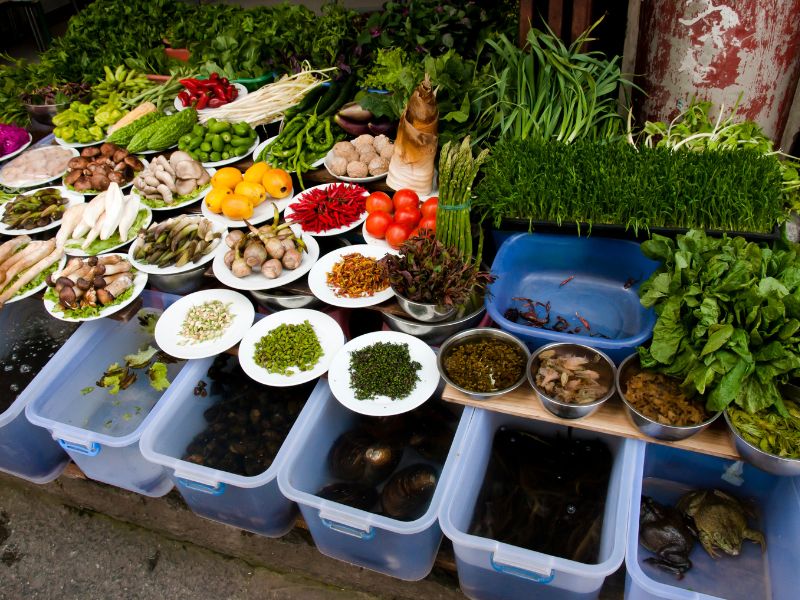
A Melting Pot of Cultures
Dali is home to the Bai people, known for their vibrant traditions, exquisite handicrafts, and warm hospitality. The city’s markets and festivals are a riot of colors, flavors, and sounds, offering a glimpse into the lives of its indigenous communities. From the daily morning markets to the grand celebrations of the Bai’s March Street Festival, Dali’s cultural tapestry is as intricate as it is fascinating.
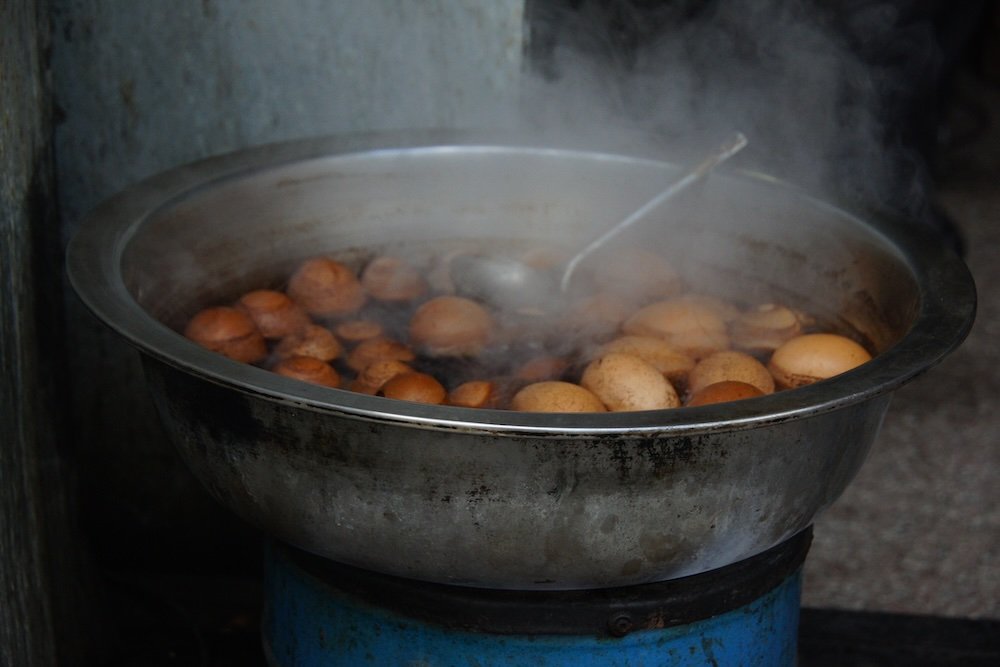
Culinary Delights
The cuisine in Dali is as diverse as its culture. Local dishes are a blend of fresh ingredients from the mountains and lake, offering flavors that are both bold and comforting. Don’t miss out on trying the local cheese, “rushan,” or the savory “xiangyun” ham, and let your taste buds embark on a journey of their own.
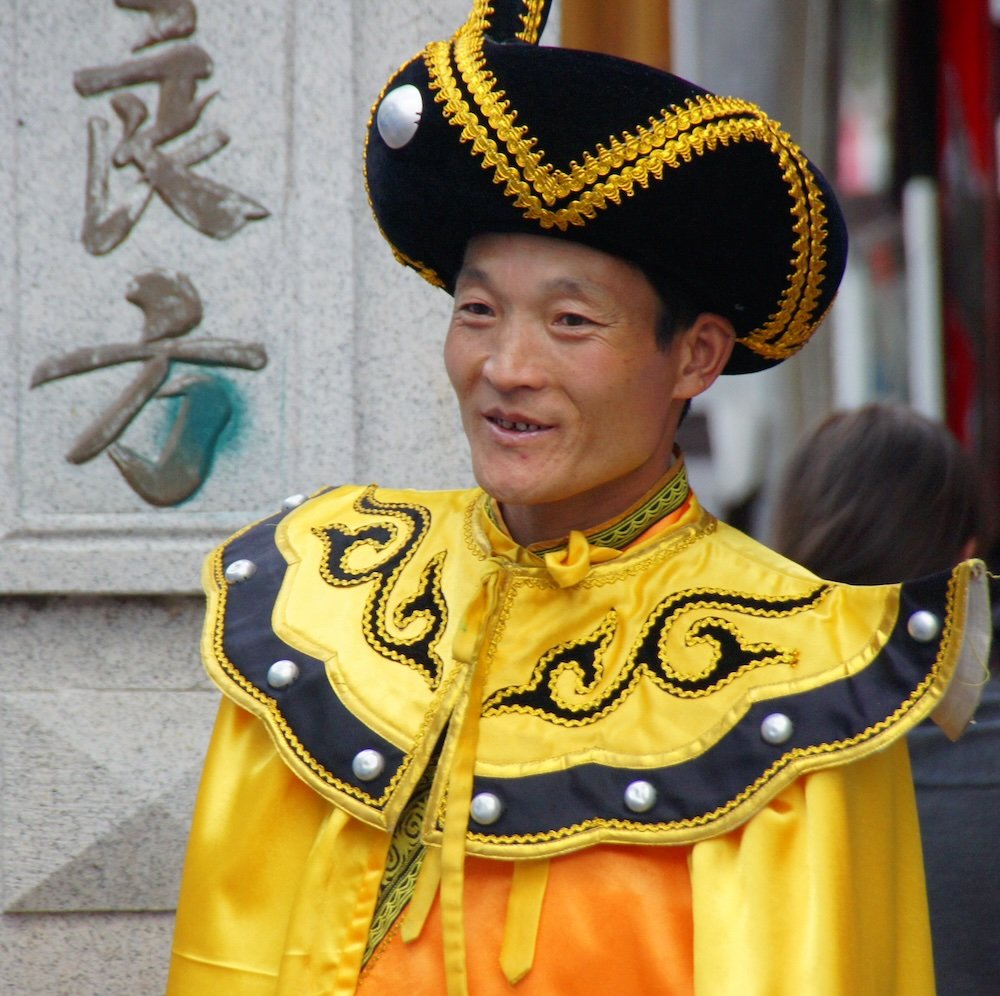
The Artistic Soul
Art and creativity flow through Dali’s veins, with numerous galleries, craft workshops, and music venues scattered across the city. The vibrant art scene is a testament to the city’s enduring spirit of expression and innovation. In Dali, art is not just observed; it’s lived and breathed, inviting visitors to not only see but also partake in its creation.
So pack your bags and get ready to discover the wonders of Dali.
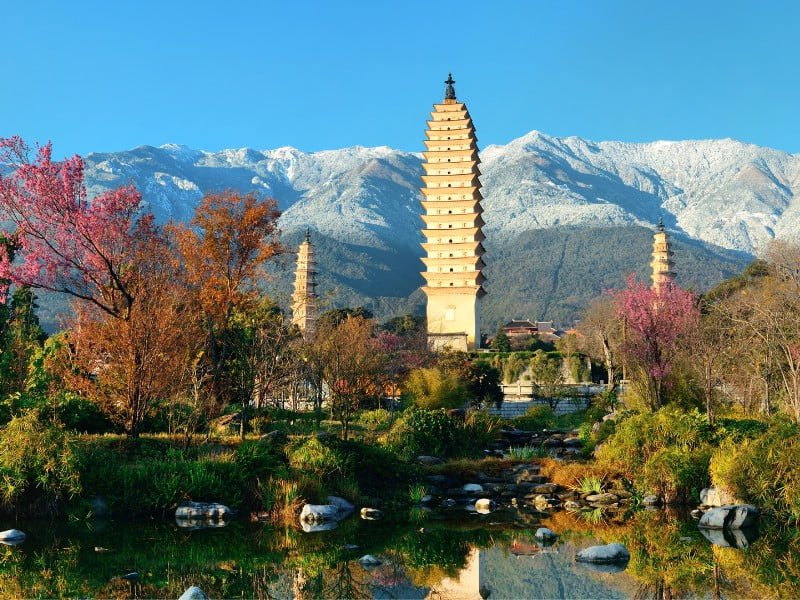
Dali City Guide: A Brief History Of Dali, China
As the historic capital of the Bai Kingdom, Dali has long been a hub for trade, culture, and religion in the region. The city’s history dates back over a thousand years, and its strategic location on the ancient Tea Horse Road played a significant role in connecting China with Southeast Asia. Today, Dali retains its traditional charm, with its well-preserved Old Town, temples, and historical landmarks.
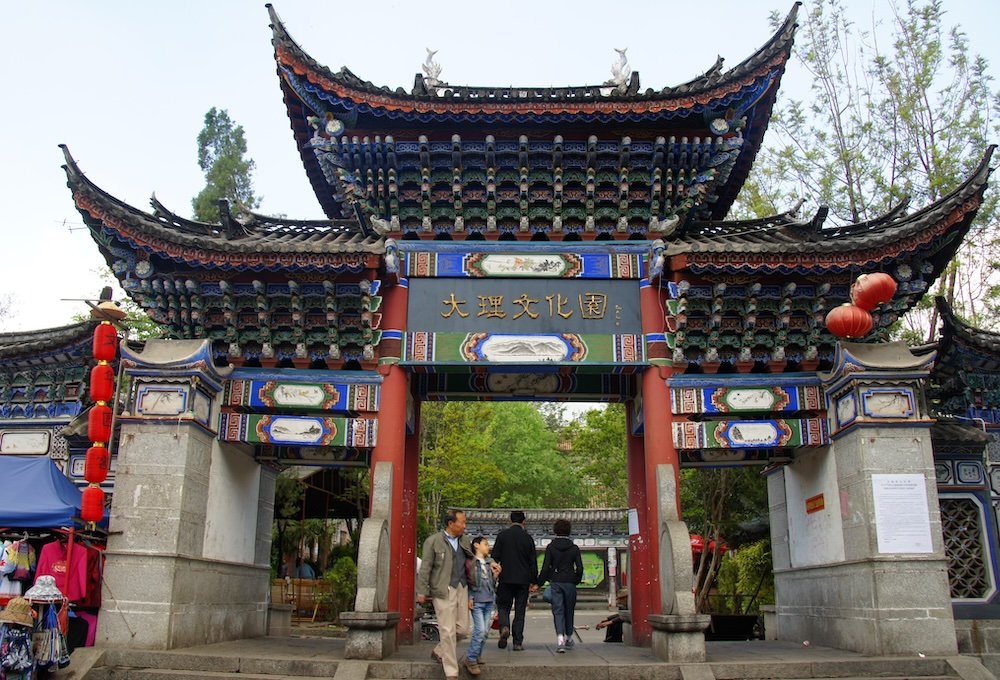
The Bai Kingdom and Early History
Dali’s history is closely tied to the Bai people, one of China’s many ethnic minorities, who have called this region home for centuries. In the 8th century, Dali became the capital of the Nanzhao Kingdom, which ruled much of present-day Yunnan and Myanmar. During this period, Dali thrived as a political and cultural center, with influences from Tibetan, Han, and Southeast Asian cultures shaping its unique identity. Later, the Dali Kingdom emerged in the 10th century, continuing to expand the region’s influence until it was absorbed into the Yuan Dynasty in the 13th century.
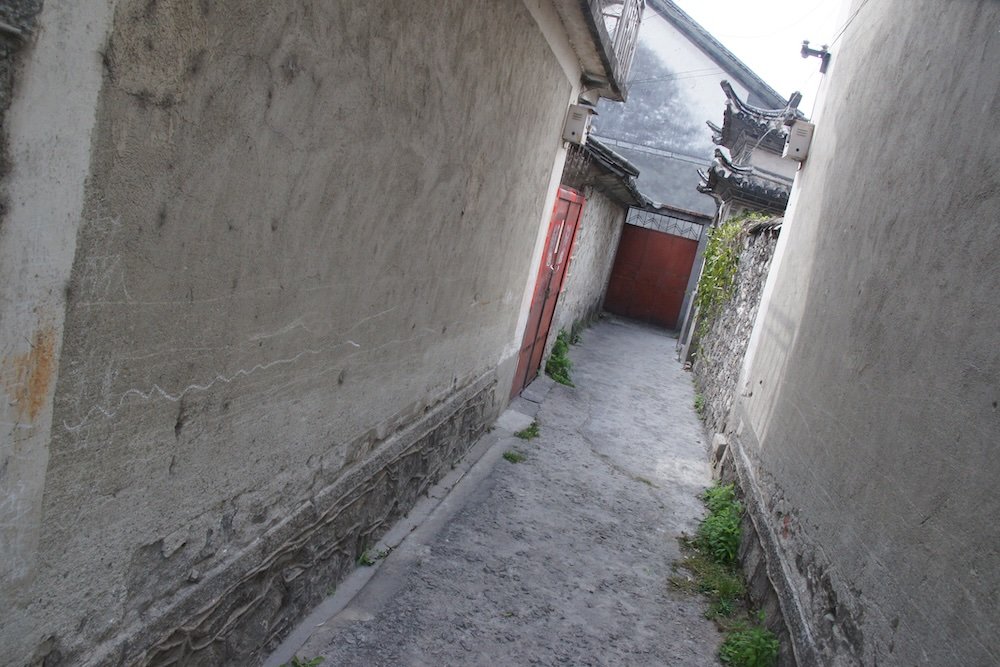
- Nanzhao Kingdom: Dali served as the capital of this powerful kingdom that influenced much of Southeast Asia.
- Cultural Melting Pot: Influences from Tibet, Han China, and Southeast Asia contributed to Dali’s diverse culture.
- Yuan Dynasty: Dali was eventually integrated into the Mongol-led Yuan Dynasty, ending its reign as an independent kingdom.
Tip: Visit the Dali Museum to see artifacts and exhibitions that showcase the city’s history during the Nanzhao and Dali Kingdom periods.

The Tea Horse Road and Trade Connections
Dali’s location on the ancient Tea Horse Road made it a crucial center for trade between China and its southwestern neighbors. This ancient trade route connected Yunnan’s tea-producing regions with Tibet and India, and Dali served as a key stop for merchants and travelers. The city became known for its production of high-quality tea, which was transported by mule caravans across the region. In return, goods such as horses, salt, and silk flowed into Dali, enriching the city’s economy and cultural exchanges.
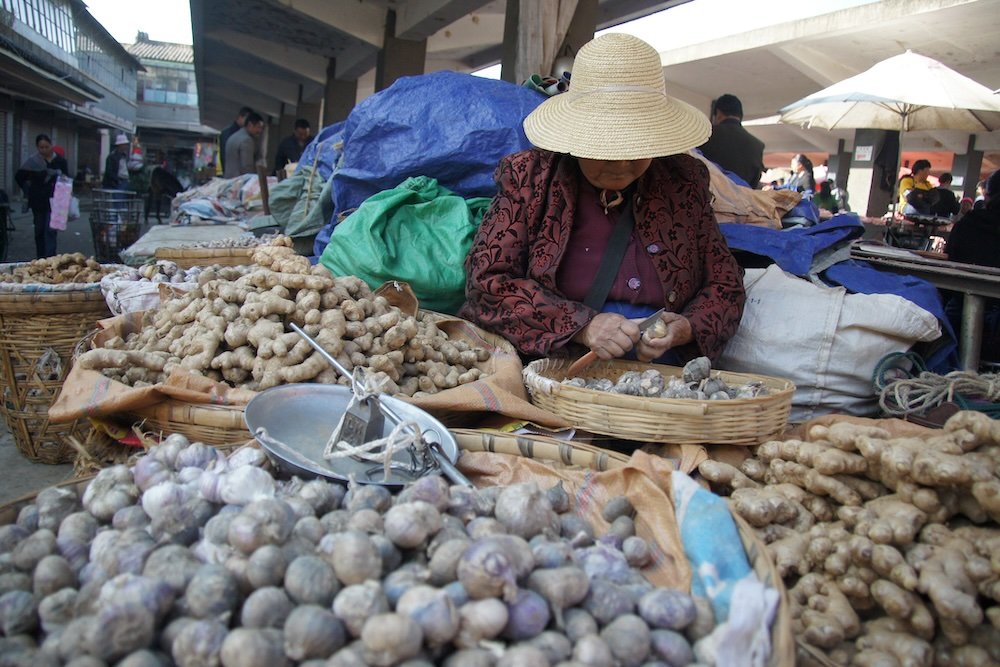
- Tea Horse Road: Dali was a vital trading hub along this ancient route connecting China to Tibet and beyond.
- Tea Production: The city played a major role in the production and export of tea, one of Yunnan’s most prized commodities.
- Cultural Exchange: Trade brought diverse goods and ideas to Dali, fostering cultural and economic growth.
Tip: Take a walk along the historic routes of the Tea Horse Road near Dali to experience the paths once trodden by traders and merchants.
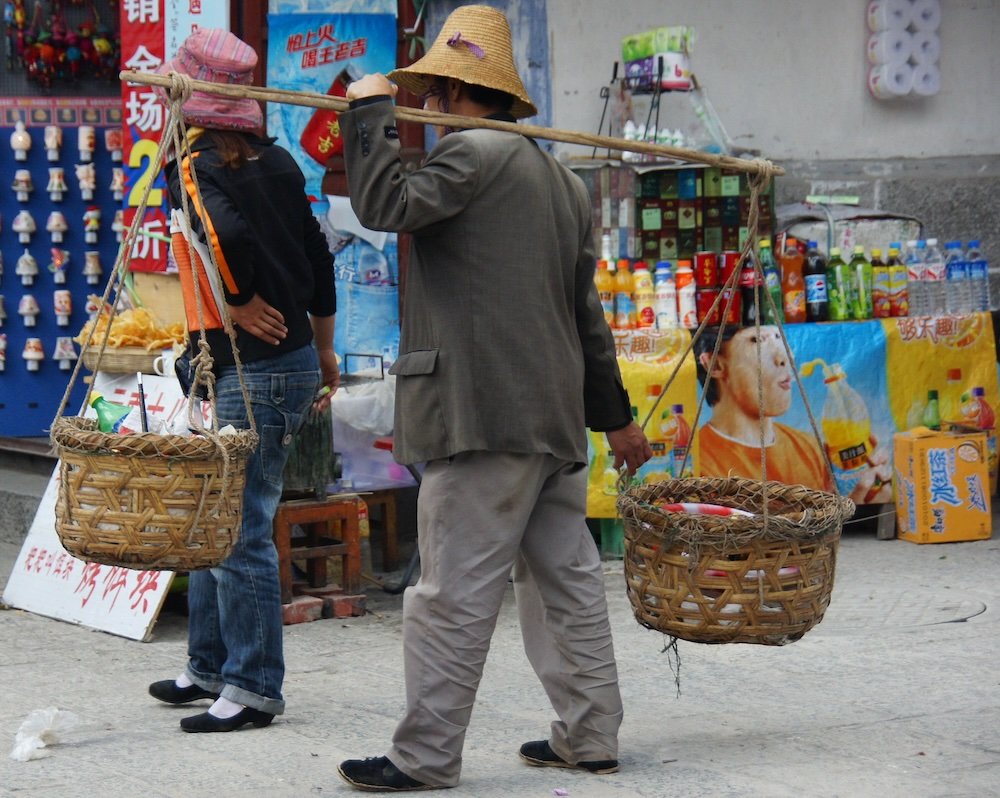
Dali Old Town: A Living Piece of History
Dali’s Old Town is a beautifully preserved example of a traditional Chinese city, offering visitors a glimpse into its storied past. Surrounded by ancient city walls and gates, the Old Town’s narrow streets are lined with Bai-style architecture, traditional shops, and temples. It was once the political and cultural heart of the Dali Kingdom, and today it remains a vibrant hub for locals and tourists alike. As you wander through the streets, you’ll come across landmarks like the Three Pagodas, which have stood for over a thousand years, symbolizing Dali’s enduring connection to its Buddhist heritage.
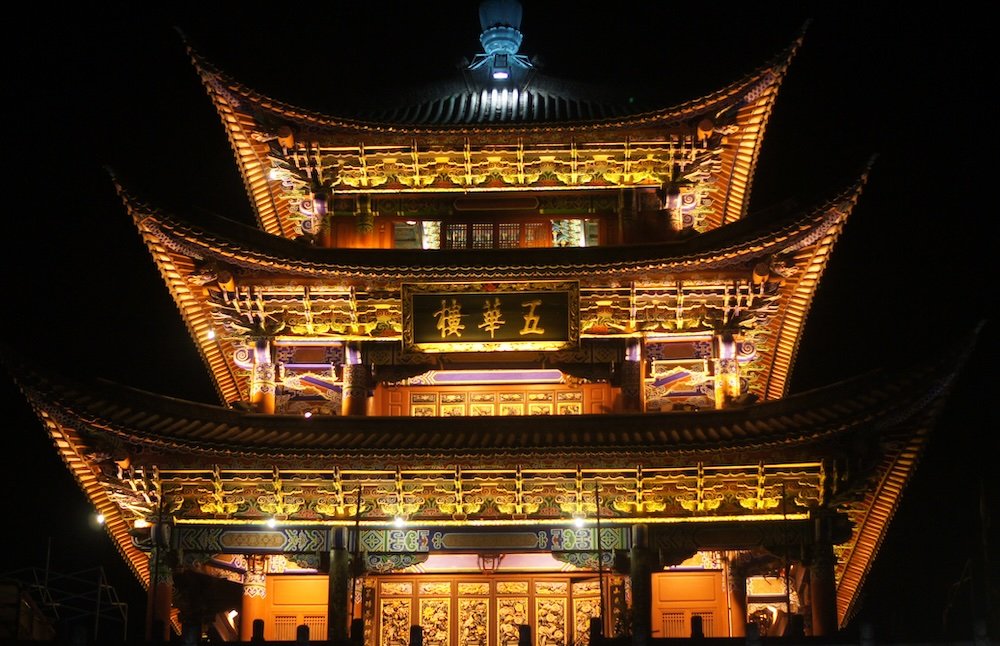
- Three Pagodas: These iconic pagodas are a symbol of Dali and have been a spiritual site for centuries.
- Bai Architecture: Admire the traditional Bai-style buildings, with their intricate carvings and unique designs.
- City Gates: The well-preserved gates and city walls give you a sense of Dali’s ancient defenses and history.
Tip: Visit Dali Old Town in the early morning for a peaceful stroll before the crowds arrive, and take in the city’s timeless atmosphere.

Dali Today: A Blend of Past and Present
While Dali is rich in history, it has also embraced its role as a modern cultural destination. The city is a favorite among travelers and artists, drawn to its beautiful landscapes, laid-back vibe, and rich cultural heritage. In recent years, Dali has become a hub for creativity, with local artists and expats opening galleries, cafes, and boutique shops in the Old Town. Despite its modernization, Dali retains a deep connection to its past, making it a fascinating place where ancient traditions and modern life coexist in harmony.

- Artistic Hub: Dali has become a popular destination for artists and creatives, adding a modern twist to the traditional Old Town.
- Cultural Events: The city hosts various festivals and cultural events, celebrating both Bai traditions and contemporary art.
- Laid-Back Atmosphere: Enjoy Dali’s relaxed pace of life as you explore its markets, cafes, and beautiful surroundings.
Tip: Explore the local art scene by visiting the many galleries and workshops scattered around the Old Town, where you can purchase unique handmade crafts.

Dali Top Attractions and Best Places to Visit in China
A long-time backpacker haunt for its authentic Chinese atmosphere and the mountains which surround it, Dali is equally as popular among domestic tourists today. In short, it is a popular place on the travel trail in China, but for good reason.
With much to see and do, you could easily spend a week here, so be sure to get this region plenty of time.
Start your time in this popular destination in Yunnan by exploring the Ancient City of Dali. Located thirteen kilometres away from the centre of the modern city of Dali, this well-preserved collection of buildings date from the Ming Dynasty.
Once an important trading and military post situated on a gateway to the Silk Road, it still contains temples, intact city walls, and folk-style homes which were once part of a vibrant community which held a great deal of importance in the region.
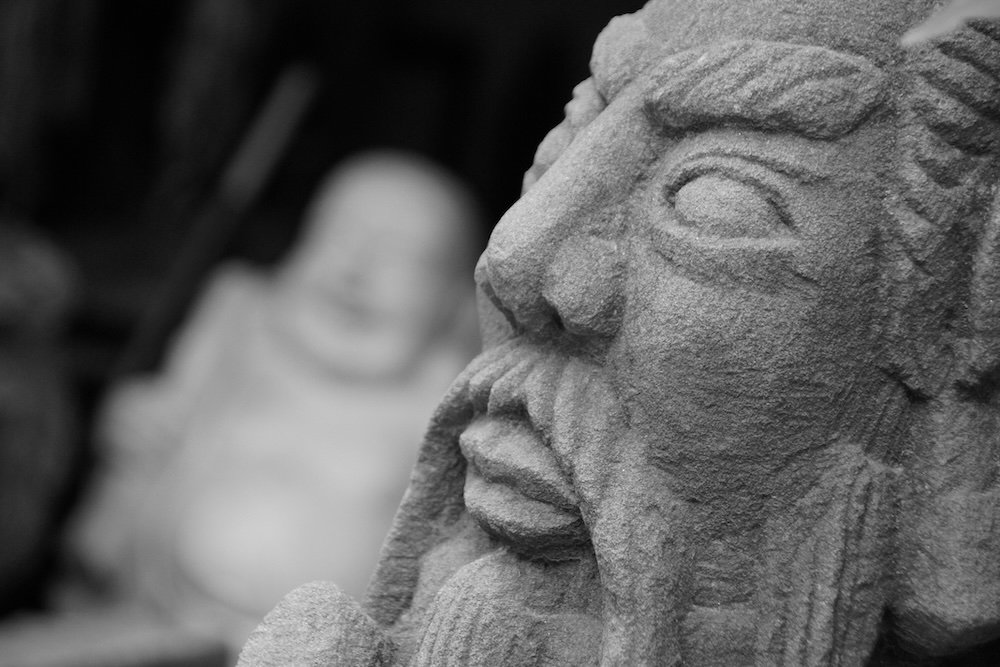
Fascinating Attractions
After you have gotten your fill of Dali’s Ancient City, make sure that Chongsheng Temple is next on your to-see list. Better known as the Three Pagodas after its primary attraction, these spires have been around for over 1,800 years and marked the time when Buddhism first arrived in the region.
Standing over 220 feet tall, these multi-tiered pagodas have a commanding presence on the skyline in the surrounding area, but that isn’t all there is to the temple complex; the main building itself is a serene place, and with an attractive bell tower and lush gardens, this place is well worth a visit.
Dali isn’t the only place in this part of Yunnan Province which has ancient buildings that have stood the test of time. After experiencing everything the city has to offer, plan a day trip out to the Ancient Town of Shaxi.
Once an important waypoint on what was known as the Yunnan-Tibet Tea Horse Road, Shaxi is an island of authenticity in a sea of sanitized reproductions of China’s past. Things may not be 100% squeaky clean here, but it is what it is – a place where real human beings still live, even after thousands of years of history.
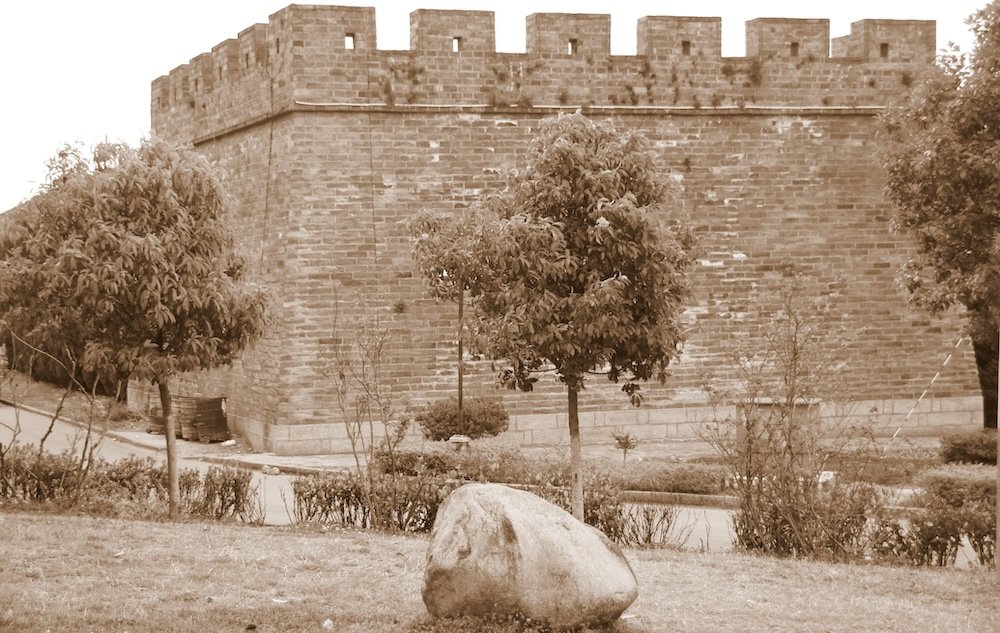
More Attractions
Here, the same old temples, shops, markets, bridges, and other infrastructures serve the same purpose they have for many centuries – the more you walk around, the more you will realize this place is the real thing.
Whether you walk amidst its rice paddies or walk through the market when locals are buying everyday essentials from merchants who can trace their lineage back countless generations, you will find the off the beaten track experience you are desperately seeking in this time-tested town.
Nature lovers will enjoy their time in the Dali area, as it is situated close by to some of China’s most beautiful alpine scenery. If you don’t have time to wander this region’s high country at your leisure, at least make time in your schedule to see the Cangshan Mountains.
A mountain range with a peak elevation of over 13,000 feet, the views over the valley from the tops of these peaks are awe-inspiring. Active travellers will love the hiking opportunities they will find here, while those who sweat at the thought of exercise will be happy to learn there is a cable car available to allow them to enjoy the view from high above the valley that is home to the city of Dali.

Other Cultural Attractions: Trip to Dali, China
Do you still have an appetite for ancient towns after visiting the ones mentioned above? Xizhou Town is another old settlement you should see while in the Dali area. A relatively short day trip from Dali, this place was a thriving centre of commerce all the way up to 1949, the year when the Communist Party of China emerged victorious over the KMT.
While its buildings have deteriorated somewhat since that time, many feel that it lends an air of authenticity to this ancient town that the Dali Ancient City lacks. When you aren’t walking through the narrow streets of this atmospheric place, check out the local market – mostly free of the trinket stalls which plague much of Dali’s market, you’ll find wandering here to be a far more pleasant experience.

Other Attractions
Xizhou is situated on the shores of Erhai Lake, a body of water considered to be one of the most picturesque in China. Start your time here by having a coffee with breakfast overlooking its misty surface. Once you have finished up, check out the sightseeing boat cruise, as it will allow you to get out onto the water and experience the peacefulness of this lake up close.
Back in Dali, the Dali Foreigner Street is where you’ll want to go if you are looking for the greatest range of souvenirs from your time in this corner of Yunnan. Yes, there is some dinky plastic crap – but there are also exquisite wood carvings, silverware, and other fine local crafts.
Look carefully, and you’ll find something unforgettable to bring home with you.
source: One Shot Adventures on YouTube
Top 22 Things To Do in Dali, China For Visitors
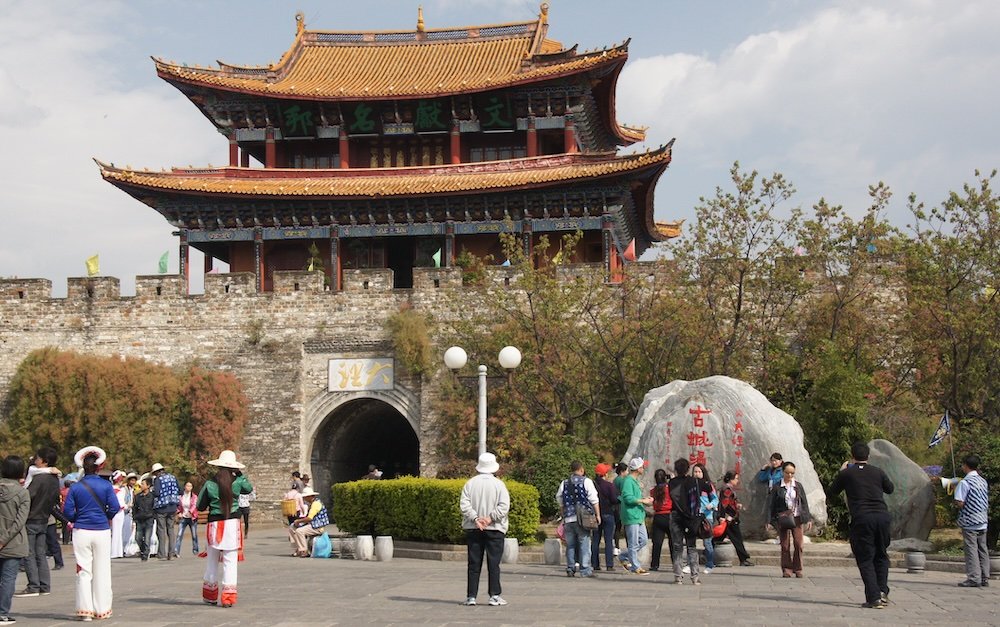
Here are the top 22 things to do in Dali:
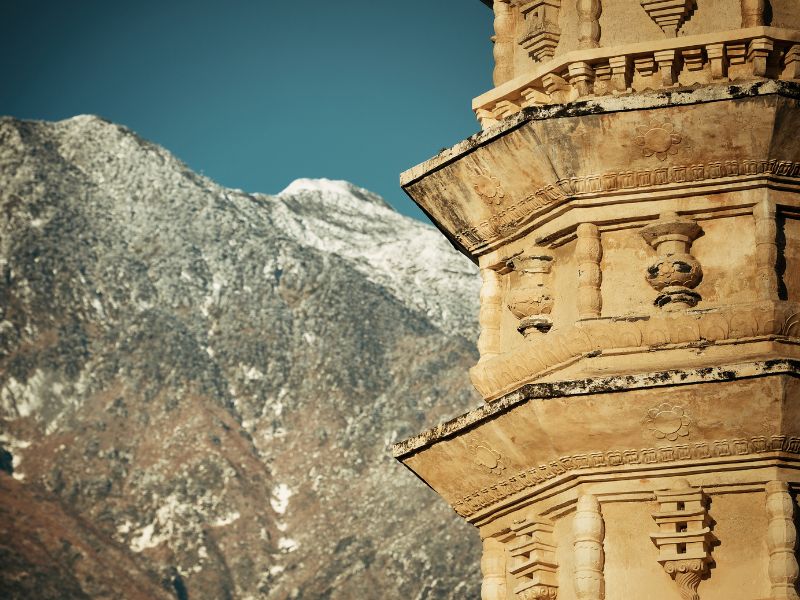
1. Explore the Ancient City of Dali
The Ancient City of Dali, also known as Dali Old Town, offers a glimpse into traditional Bai culture with its well-preserved architecture and cobbled streets. Stroll through the ancient gates and discover bustling markets, quaint tea houses, and artisan shops. The city’s atmosphere transforms at night when lanterns light up the streets, creating a magical setting. It’s a must-see destination to experience both the historic charm and vibrant local life.

- Traditional architecture: Beautiful Bai-style buildings line the streets.
- Bustling markets: Shop for local crafts and souvenirs.
- Evening magic: Streets illuminated with glowing lanterns at night.
2. Visit the Three Pagodas
The Three Pagodas, standing northwest of Dali Old Town, are a symbol of the city’s rich history and spiritual significance. These 9th and 10th-century structures have survived earthquakes and wars, making them a marvel of ancient engineering. The reflection of the pagodas in the nearby pond creates an iconic photo opportunity. Visitors can also explore the Chongsheng Temple complex, which provides sweeping views of the city and surrounding landscapes.
- Ancient relics: Pagodas date back to the Tang Dynasty.
- Photo opportunities: Capture the reflection in the nearby pond.
- Chongsheng Temple: Explore the surrounding temple complex for stunning views.
3. Cruise on Erhai Lake
Erhai Lake is the second largest freshwater lake in Yunnan, known for its serene beauty and “ear-shaped” geography. Take a boat cruise to discover its scenic islands, each with unique temples and fishing villages. Alternatively, cycling along the lakeshore provides breathtaking views of the water and surrounding mountains. Don’t miss the magical sunset over the lake for an unforgettable experience.
- Boat cruises: Explore the lake and its temples by boat.
- Cycling routes: Ride around the lake for panoramic views.
- Sunset views: Watch the sun set over the lake for a serene moment.
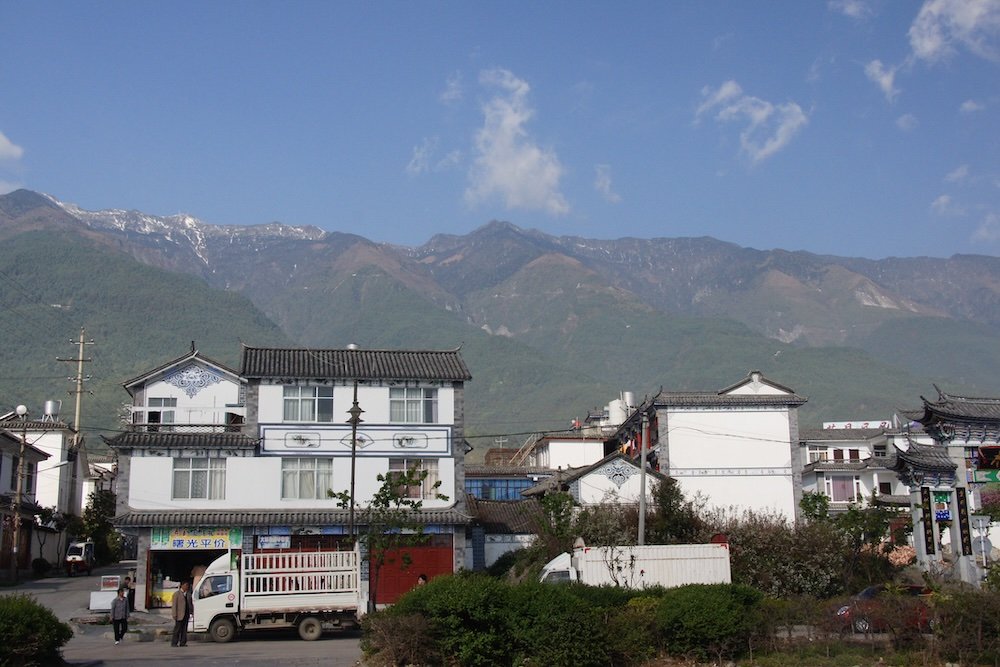
4. Hike Cangshan Mountain
Cangshan Mountain towers over Dali, offering hiking trails with stunning views of both the mountain and Erhai Lake below. Visitors can take a chairlift to the Zhonghe Temple for a quicker route to the top, where several hiking trails begin. The Jade Belt Road is a gentle trail that runs along the mountainside, offering spectacular scenery. As you hike, keep an eye out for the famous Cangshan marble stones and flowing mountain streams.
- Scenic trails: Numerous hiking options for all skill levels.
- Zhonghe Temple: Accessible by chairlift for stunning panoramic views.
- Natural beauty: Famous for its marble stones and crystal-clear streams.

5. Wander Through Xizhou Town
Xizhou Town, located near Dali, is famous for its well-preserved Bai architecture and vibrant daily market. Walk through the historic Yan family compound, where traditional Bai homes and courtyards showcase local architecture. Be sure to sample Xizhou baba, a delicious stuffed pancake that comes in both sweet and savory varieties. The town offers an authentic glimpse into Bai culture and everyday life.
- Historic homes: Visit the Yan family compound for traditional Bai architecture.
- Local cuisine: Try the famous Xizhou baba, a stuffed pancake.
- Daily market: A lively place to observe local life and shop for goods.
6. Relax in Shuanglang Village
Perched on the northeastern shore of Erhai Lake, Shuanglang Village has become a haven for artists and those seeking tranquility. The village is filled with boutique hotels, art galleries, and cozy cafes offering stunning lake views. A leisurely meal by the water, featuring fresh seafood, is a must. Shuanglang’s relaxed pace makes it the perfect retreat from the hustle and bustle of Dali.
- Artistic hub: Galleries and boutique hotels abound.
- Lakeside dining: Enjoy fresh seafood with a view.
- Peaceful retreat: Escape the city for a more relaxed pace of life.

7. Visit the Dali Museum
The Dali Museum offers a rich collection of artifacts that shed light on the region’s history, culture, and art. Exhibits include items from the Nanzhao and Dali Kingdoms, as well as traditional Bai clothing and crafts. The museum is an excellent introduction to the area’s heritage before exploring the city. The blend of modern and traditional Bai architecture makes the museum itself a visual highlight.
- Historical artifacts: See relics from the Nanzhao and Dali Kingdoms.
- Cultural insights: Learn about Bai traditions and local crafts.
- Architectural blend: The museum’s structure combines traditional and modern styles.
8. Explore Butterfly Spring Park
Situated at the foot of Cangshan Mountain, Butterfly Spring Park is renowned for its natural beauty and thousands of butterflies that gather in spring. Legend has it that the spring symbolizes eternal love, attracting couples and visitors alike. The park features a serene environment with clear waters and lush greenery, perfect for a peaceful stroll. There’s also a butterfly museum where you can learn more about these delicate creatures and their role in the local ecosystem.
- Seasonal beauty: Thousands of butterflies gather in spring.
- Tranquil atmosphere: Ideal for a relaxing nature walk.
- Butterfly museum: Discover various species and their importance.
9. Attend the Dali International Photography Exhibition
Every year, Dali hosts the International Photography Exhibition, attracting artists and photographers from around the world. The exhibition showcases a diverse range of photographic works, from traditional landscapes to avant-garde pieces. It’s a fantastic opportunity to explore creative works while experiencing Dali’s growing reputation as a cultural hub. The beautiful setting of Dali provides a unique backdrop for the event.
- Global showcase: See works by international photographers.
- Cultural hub: Dali is becoming a key destination for art and culture.
- Inspiring setting: Enjoy the exhibition surrounded by Dali’s scenic beauty.
10. Visit Zhoucheng Village
Famed for its traditional tie-dyeing techniques, Zhoucheng Village offers visitors a chance to learn this ancient craft firsthand. Participate in a tie-dye workshop to create your own unique fabric designs. The village also features ancient temples and traditional Bai houses, offering a peek into the local way of life. It’s the perfect spot to purchase authentic, handcrafted souvenirs.
- Tie-dye workshops: Create your own fabric designs.
- Cultural experience: Explore Bai temples and houses.
- Unique souvenirs: Purchase handmade tie-dyed fabrics.

11. Explore Weishan Old Town
A bit further from Dali, Weishan Old Town is worth the trip for its slower pace and well-preserved architecture. This lesser-known gem is the birthplace of the Nanzhao Kingdom and is steeped in history. The town’s traditional market offers a chance to sample local foods and shop for crafts. Weishan’s quiet streets and historic charm make it a refreshing escape from the crowds of Dali.
- Historic birthplace: The origin of the Nanzhao Kingdom.
- Traditional market: Sample local foods and shop for crafts.
- Serene atmosphere: Enjoy a peaceful break from busier towns.
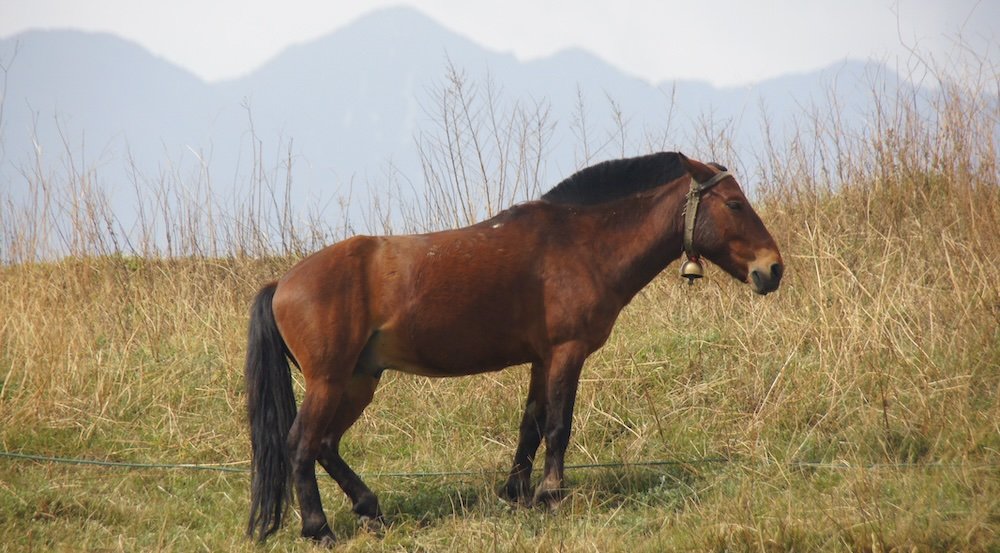
12. Climb Weibao Mountain
A sacred site near Weishan, Weibao Mountain offers a spiritual experience along with scenic beauty. The mountain is home to several Taoist temples and pavilions that dot its hiking trails. The climb is both spiritually enriching and physically rewarding, with breathtaking views of the countryside. It’s a popular pilgrimage site for Taoists and an ideal place for meditation and reflection.
- Taoist pilgrimage: Visit sacred temples along the trail.
- Breathtaking views: Enjoy sweeping views of the surrounding countryside.
- Spiritual retreat: A peaceful spot for meditation and reflection.

13. Taste Dali’s Local Cuisine
Dali’s culinary scene reflects the area’s rich cultural diversity, with a blend of Bai, Tibetan, and Yunnanese dishes. Must-try dishes include crossing-the-bridge noodles, Dali-style claypot fish, and rubing (grilled cheese). Local markets and street vendors are the best places to taste these traditional foods. Don’t forget to wash it all down with a cold Dali beer!
- Local specialties: Try crossing-the-bridge noodles and rubing.
- Street food: Sample dishes from local markets and food stalls.
- Local drinks: Enjoy a refreshing Dali beer with your meal.
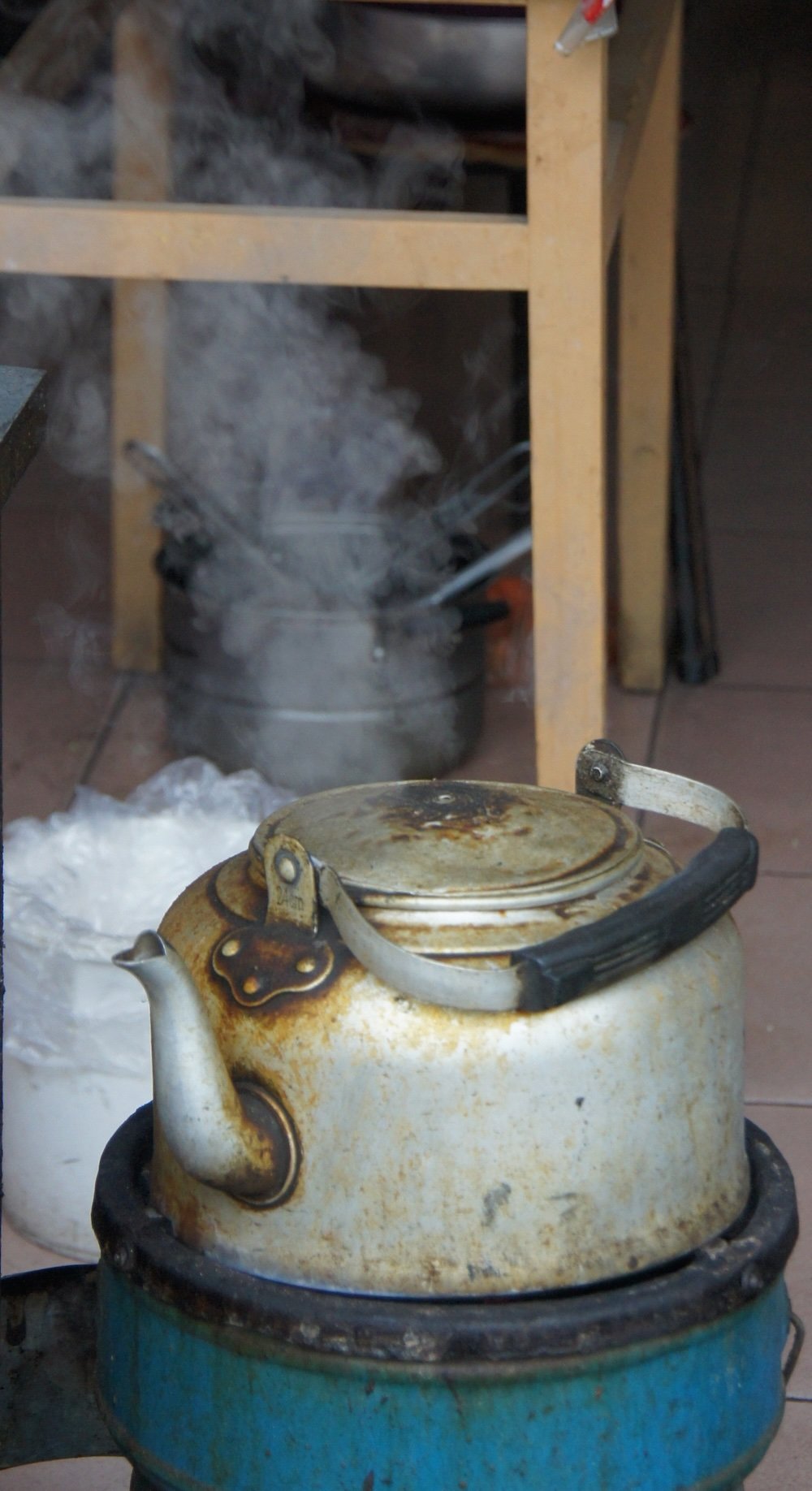
14. Enjoy Tea at a Traditional Tea House
Tea culture is deeply rooted in Dali, and visiting a traditional tea house is a must for any visitor. Here, you can experience a traditional tea ceremony and sample various types of tea, including the renowned Pu’er tea. Many tea houses are located in beautifully restored buildings, offering a peaceful retreat from the bustling streets. It’s the perfect way to unwind while learning about local tea traditions.
- Tea ceremony: Experience a traditional Bai tea ritual.
- Famous Pu’er: Sample the region’s famous Pu’er tea.
- Restored buildings: Enjoy tea in a peaceful, historic setting.
15. Participate in the Torch Festival
The Torch Festival is celebrated annually by the Bai and other ethnic groups in Yunnan and is one of Dali’s most colorful events. The festival features traditional sports, folk dances, and the symbolic lighting of torches to drive away evil spirits. Visitors are encouraged to join the festivities and witness local customs firsthand. The vibrant atmosphere and cultural significance make it an unforgettable experience.
- Traditional events: Participate in dances and sports.
- Cultural immersion: Celebrate with the local Bai people.
- Torch lighting: A symbolic ritual to ward off evil spirits.
16. Take a Cooking Class
Joining a cooking class in Dali is a fun and interactive way to learn about local ingredients and culinary techniques. Classes often begin with a market visit to select fresh ingredients, followed by hands-on instruction in making traditional dishes. By the end, you’ll have the chance to savor your creations. It’s an immersive way to experience Yunnan’s rich food culture.
- Market visit: Pick out fresh ingredients with your instructor.
- Hands-on learning: Prepare traditional dishes yourself.
- Enjoy your meal: Taste your culinary creations after class.
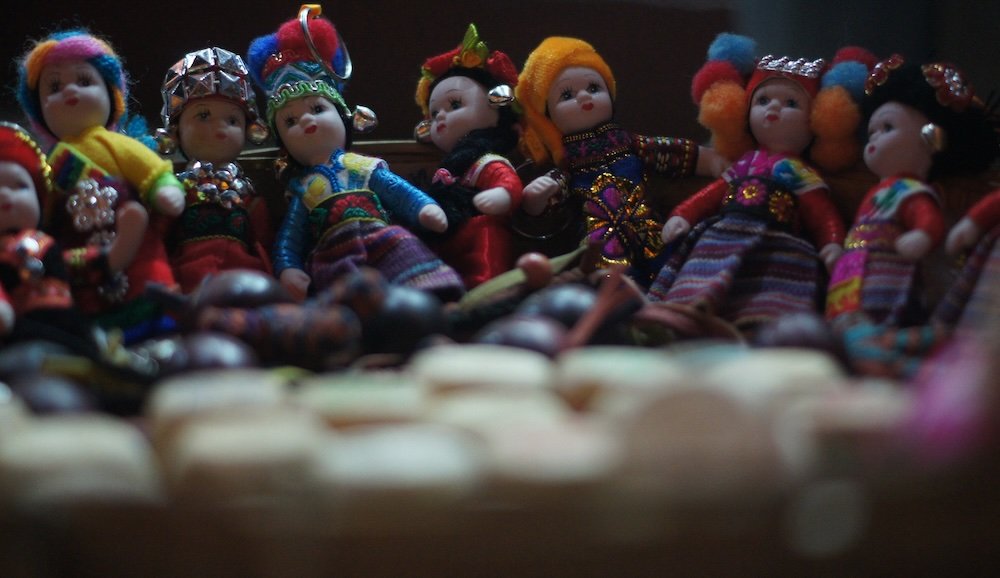
17. Shop for Local Crafts
Dali is renowned for its vibrant arts and crafts scene, where local artisans create pottery, textiles, and jewelry. The best places to shop are in Dali Old Town and Xizhou Town, where you can find handcrafted souvenirs. Visiting workshops also allows you to see the artists in action. Supporting these local craftspeople ensures you take home an authentic piece of Dali’s artistic heritage.
- Handcrafted items: Pottery, textiles, and jewelry made by local artisans.
- Workshop visits: Watch artists create their pieces.
- Support local: Purchase unique souvenirs and support the local economy.
18. Visit Bai Traditional Houses in Xizhou
The traditional Bai houses in Xizhou are famous for their intricate wood carvings, vibrant paintings, and spacious courtyards. Visitors can tour these historic homes to learn about Bai culture and architecture. Some houses host cultural performances and serve traditional snacks. It’s a wonderful way to immerse yourself in the local heritage and lifestyle.
- Bai architecture: Admire wood carvings and colorful paintings.
- Cultural performances: Watch Bai music and dance in the courtyards.
- Tasty treats: Enjoy traditional Bai snacks during your visit.
19. Hike to Hidden Waterfalls
The mountains surrounding Dali are home to numerous hidden waterfalls, perfect for refreshing hikes and a break from city life. Guides can lead you to secluded spots where you can enjoy a picnic or take a dip in natural pools. These trails often pass through small villages and terraced fields, adding a cultural dimension to your adventure. It’s a fantastic way to experience both nature and local life.
- Secluded spots: Discover hidden waterfalls off the beaten path.
- Guided hikes: Local guides provide insight and lead you to scenic spots.
- Cultural stops: Pass through small villages and fields along the way.
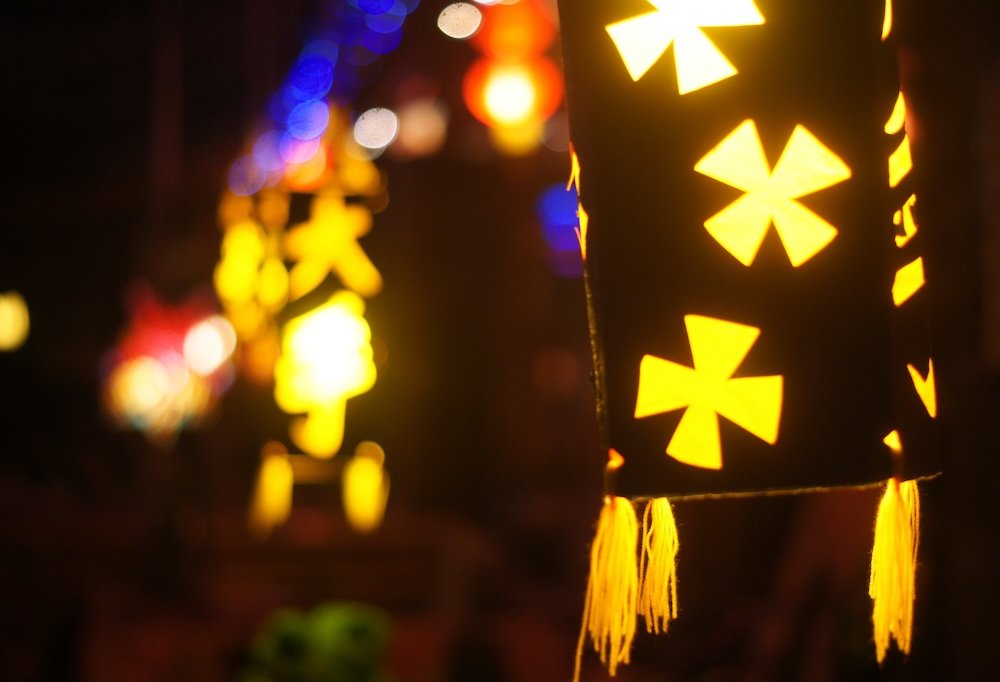
20. Explore Dali’s Night Market
Dali’s Night Market is a vibrant hub of activity where you can sample a wide variety of street food and browse for souvenirs. The market comes alive in the evening with locals and tourists mingling in the lively atmosphere. Enjoy local barbecued meats, dumplings, and sweet treats while exploring the stalls. It’s also a great place to shop for unique crafts and enjoy street performances.
- Street food: Try a variety of local dishes and snacks.
- Souvenirs: Shop for crafts and handmade goods.
- Lively atmosphere: Experience local life at its busiest.
21. Attend the San Yue Jie Festival
The San Yue Jie Festival, held in the third lunar month, is one of Dali’s largest and most vibrant traditional events. People from different ethnic groups gather to trade goods, enjoy music and dance, and participate in horse racing. The festival provides a unique opportunity to witness the diverse cultural traditions of Yunnan’s people. It’s a colorful and lively event that brings the community together.
- Cultural festival: Celebrate with various ethnic groups in Yunnan.
- Horse racing: Watch thrilling races during the festivities.
- Market atmosphere: Trade goods and experience local life.
22. Relax at Cangshan’s Hot Springs
After a day of exploring, there’s nothing better than unwinding in Cangshan’s natural hot springs. These thermal waters, nestled in the mountain’s foothills, are believed to have healing properties. Several hot spring resorts offer a variety of pools and spa treatments, making it an ideal place to relax. The stunning mountain scenery adds to the serenity and rejuvenation of the experience.
- Healing waters: Soak in natural hot springs believed to have therapeutic benefits.
- Spa resorts: Enjoy a variety of pools and treatments.
- Scenic retreat: Relax with breathtaking views of the surrounding mountains.
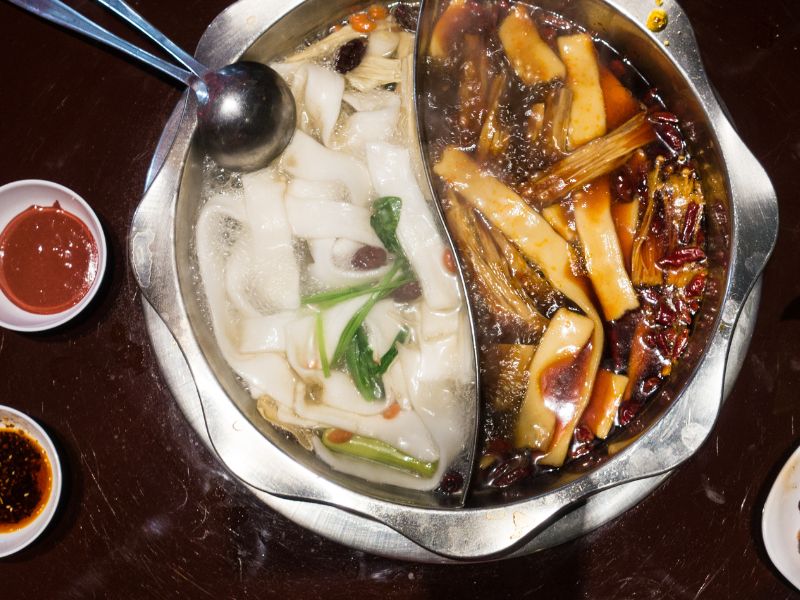
What To Eat and Drink in Dali, China
Whether you’re indulging in fresh Erhai fish or sipping on locally brewed Dali beer, the city’s food and drink offerings are sure to be a highlight of your visit. Here’s your guide to must-try eats and drinks in Dali:
Dali’s Signature Dishes
1. Erhai Fish (洱海鱼)
Caught fresh from the clear waters of Erhai Lake, this dish is a true taste of Dali’s natural bounty. The fish is often grilled or steamed, seasoned with local herbs like mint and chili, creating a flavorful and aromatic meal. It’s a popular choice among locals and visitors alike, especially when enjoyed with a view of the lake. Each bite of this tender, flaky fish reflects the region’s dedication to fresh, locally sourced ingredients. It’s a must-try for seafood lovers looking to savor authentic flavors.
- Local Herbs: The use of fresh herbs like mint and cilantro highlights the unique flavors of Yunnan cuisine.
- Grilled or Steamed: Enjoy this dish in different styles, each offering a distinct taste and texture.
- Lake View Dining: For the best experience, try Erhai fish at a lakeside restaurant with panoramic views of the water.
Tip: Pair your Erhai fish with a cold glass of locally brewed Dali beer to enhance the flavors.
2. Rice Noodles with Pork (过桥米线)
This comforting bowl of rice noodles is a staple breakfast or lunch dish in Dali, and it’s beloved for good reason. Served with thinly sliced pork, crisp vegetables, and an aromatic broth, it’s a satisfying and nutritious meal that showcases Yunnan’s love for noodles. The noodles are soft and silky, soaking up the rich flavors of the broth with every bite. Whether you’re a noodle novice or a seasoned connoisseur, this dish is a must-try that perfectly encapsulates the simplicity and depth of Dali’s cuisine.
- Aromatic Broth: The broth is simmered with spices and herbs, creating a warm, comforting flavor.
- Fresh Ingredients: Crisp vegetables and tender pork add texture and depth to the dish.
- Popular Breakfast Choice: Start your day like a local with a steaming bowl of these delicious noodles.
Tip: Add a splash of local chili oil for an extra kick of heat and flavor.
3. Crossing-the-Bridge Noodles (过桥米线)
This iconic Yunnan dish is more than just a meal—it’s an experience. A steaming hot pot of broth is served alongside raw ingredients like thin slices of meat, vegetables, and rice noodles. You’ll cook each ingredient in the hot broth at your table, creating a personalized bowl of noodle soup. The story behind the name involves a devoted wife who brought her husband lunch across a bridge, using the hot broth to keep the meal warm. Today, this dish is a symbol of warmth, care, and culinary tradition.
- Interactive Meal: Cook the ingredients yourself in the hot broth, making it a fun dining experience.
- Customizable: Choose your favorite ingredients to create the perfect bowl of noodle soup.
- Rich Broth: The broth is the star, often made from chicken or pork bones, creating a deep, savory flavor.
Tip: Don’t rush! Let the broth work its magic and enjoy each component as it cooks to perfection.
4. Yunnan Cheese (乳扇)
Also known as Rushan, this unique cheese is a testament to the dairy traditions of the Bai people. Unlike most cheeses, Rushan is made from cow’s milk and has a soft, slightly chewy texture. It’s often grilled or fried and served with a sweet or savory dip, such as rose petal jam or honey. The subtle flavor and versatile preparation make it a delightful snack or side dish that you won’t find anywhere else. It’s a perfect example of how Dali’s local ingredients are transformed into something truly special.
- Grilled or Fried: Enjoy it warm, with a slightly crispy outside and a soft, creamy inside.
- Sweet or Savory: Try it with different dips, from sweet rose jam to spicy chili sauce.
- Local Specialty: Rushan is a must-try for cheese lovers looking for something uniquely Yunnan.
Tip: For a sweet treat, try Rushan with honey and sesame seeds—a delicious combination that highlights its creamy texture.
5. Shanxi Mature Vinegar Peanuts (山西老陈醋花生)
These crunchy peanuts are marinated in mature vinegar, giving them a tangy, addictive flavor that’s hard to resist. Often served as a snack or appetizer, they provide a delightful contrast of textures and a burst of umami with every bite. The dish is a popular choice in Dali, where it’s enjoyed with a glass of beer or as a side dish to main meals. It’s a simple yet flavorful introduction to the bold, zesty side of Chinese cuisine.
- Tangy Flavor: The mature vinegar adds a sharp, tangy taste that complements the crunch of the peanuts.
- Perfect Appetizer: A great way to start a meal or enjoy with a drink as you relax by the lake.
- Street Food Staple: Often sold at local markets, these peanuts are a favorite street food snack.
Tip: Pair these peanuts with a cold Dali beer for the perfect combination of flavors.

Must-Try Beverages
1. Dali Beer (大理啤酒)
Locally brewed and loved by both residents and visitors, Dali Beer is a crisp, refreshing lager that’s perfect for enjoying on a sunny day. It’s the ideal accompaniment to spicy dishes and goes down smoothly after a day of exploring. Light and easy to drink, it’s a great way to cool off and soak in the relaxed atmosphere of Dali. Whether you’re enjoying it with friends at a lakeside bar or sipping it solo as you watch the sunset, Dali Beer is a must-try during your visit.
- Local Favorite: Brewed right in Dali, this beer captures the laid-back spirit of the city.
- Refreshing: Light and crisp, it’s the perfect drink for pairing with local dishes or enjoying on its own.
- Available Everywhere: Find it in bars, restaurants, and local shops throughout the city.
Tip: Try Dali Beer with a plate of grilled Erhai fish for a true taste of the region.
2. Sweet Osmanthus Tea (桂花茶)
This fragrant tea, made from the delicate osmanthus flowers, is a local favorite known for its sweet, floral aroma. Often served hot, it’s a soothing drink that pairs well with traditional snacks or sweets. The tea is not only delicious but is also believed to have health benefits, such as aiding digestion and promoting relaxation. Whether you’re enjoying it in a cozy tea house or as a refreshing pick-me-up during your sightseeing, Sweet Osmanthus Tea is a lovely way to experience Dali’s tea culture.
- Floral Aroma: The delicate scent of osmanthus flowers creates a calming and aromatic experience.
- Health Benefits: Known for its calming properties, it’s a perfect drink for relaxation and digestion.
- Traditional Tea Houses: Enjoy it in a traditional setting to fully appreciate its cultural significance.
Tip: Pair the tea with local sweets, such as rose petal jam or Yunnan cheese, for a delightful afternoon treat.
3. Highland Barley Wine (青稞酒)
Inspired by Tibetan traditions, Highland Barley Wine is a strong, robust spirit made from highland barley. This unique drink has a rich, earthy flavor and is often enjoyed during special occasions or celebrations. It’s a great way to toast your travels and experience a different side of Yunnan’s culinary culture. While it might be an acquired taste for some, its distinctive character makes it a must-try for adventurous drinkers looking to sample local spirits.
- Robust Flavor: The rich, earthy taste of highland barley makes this wine a bold choice for those who enjoy strong drinks.
- Traditional Craft: Made using traditional techniques, it’s a drink with deep cultural roots in the region.
- Celebratory Drink: Often enjoyed during festivals and special occasions, it’s a symbol of hospitality and celebration.
Tip: Sip it slowly and savor the unique flavor—this is a strong drink meant to be enjoyed mindfully.

Tours For Visitors To Dali, China
Here’s a comprehensive list of tours you should consider to make the most out of your visit to Dali.
1. Three Pagodas and Chongsheng Temple Tour
The Three Pagodas are perhaps the most iconic landmarks in Dali, standing tall against the backdrop of the Cangshan Mountains. This tour will take you through the history of these ancient structures, which date back over a thousand years. The pagodas are part of the Chongsheng Temple complex, once the royal temple of the Dali Kingdom, making it a spiritual and historical highlight of any visit. A guided tour will provide you with fascinating insights into the region’s Buddhist heritage and offer some of the best photo opportunities in Dali.
- Three Pagodas: Visit these iconic ancient towers, which have stood for over a millennium.
- Chongsheng Temple: Explore the temple complex, which was once a royal spiritual center of the Dali Kingdom.
- Mountain Views: Enjoy the incredible views of the Cangshan Mountains as a backdrop to the pagodas.
Tip: Visit early in the morning for a more peaceful experience and to avoid the midday crowds.
2. Erhai Lake Boat Cruise
For a relaxing and scenic tour, hop on a boat cruise across Erhai Lake, one of the largest freshwater lakes in China. The lake is surrounded by picturesque villages and provides stunning views of both the Cangshan Mountains and the nearby towns. Many tours offer stops at fishing villages, where you can see traditional Bai fishing techniques in action. This boat tour is perfect for those who want to enjoy the tranquil beauty of Dali’s natural landscapes while learning about the daily lives of the local Bai people.
- Scenic Beauty: Cruise across the crystal-clear waters of Erhai Lake, with panoramic views of the mountains and villages.
- Fishing Villages: Stop at local Bai fishing villages and learn about traditional fishing methods.
- Temple Visits: Some tours include visits to lakeside temples, where you can experience the spiritual side of the region.
Tip: Pack some snacks and enjoy a peaceful picnic on the boat while taking in the views of the lake and mountains.
3. Cangshan Mountain Hike and Cable Car Tour
For adventure seekers, a hike in the Cangshan Mountains is an absolute must. These mountains rise dramatically above Dali, offering challenging but rewarding hikes with breathtaking views of Erhai Lake and the surrounding countryside. Many tours will take you up the mountain by cable car, offering a scenic ride to the Zhonghe Temple or the Cloud Tourist Path, where you can enjoy easier walks along the mountain ridges. Whether you choose a full-day hike or a more leisurely exploration, this tour offers the perfect combination of nature, history, and panoramic views.
- Cable Car Ride: Take a cable car up to the Zhonghe Temple or the Cloud Tourist Path for stunning mountain views.
- Hiking Trails: Choose from a variety of hiking routes, from easy walks to more challenging trails.
- Panoramic Views: Marvel at the sweeping views of Erhai Lake and the surrounding countryside from the mountain ridges.
Tip: Be sure to wear sturdy hiking shoes and bring plenty of water, as some trails can be steep and uneven.
4. Xizhou Village and Bai Culture Tour
For a deeper dive into local culture, a visit to Xizhou Village is a must. Located just a short distance from Dali, Xizhou is known for its well-preserved Bai architecture and rich cultural heritage. On this tour, you’ll explore traditional Bai homes, visit bustling markets, and learn about the Bai people’s customs and way of life. Many tours also offer a chance to watch a Bai tea ceremony, giving you an authentic experience of this minority group’s traditions. Xizhou offers a glimpse into the past and is perfect for those looking to experience the local culture beyond Dali’s main tourist sites.
- Traditional Architecture: Explore Xizhou’s beautifully preserved Bai-style homes, with their unique whitewashed walls and intricate carvings.
- Local Markets: Visit lively markets where locals sell fresh produce, textiles, and handicrafts.
- Tea Ceremony: Watch or participate in a traditional Bai tea ceremony, a unique cultural experience.
Tip: Visit in the morning to experience the vibrant atmosphere of the local markets, where you can also purchase fresh Bai snacks.
5. Shaxi Ancient Town and Shibao Mountain Tour
For a journey back in time, consider a tour to the nearby Shaxi Ancient Town and Shibao Mountain. Once a vital stop on the Tea Horse Road, Shaxi is a well-preserved trading town with charming cobblestone streets, ancient temples, and traditional inns. From Shaxi, you can take a short trip to Shibao Mountain, known for its impressive Buddhist grottoes and ancient cliff carvings. This tour combines culture, history, and natural beauty, making it a perfect day trip from Dali.
- Shaxi Ancient Town: Wander through the historic streets of this ancient trading town and discover its rich history.
- Shibao Mountain: Explore the Buddhist grottoes and admire the intricate stone carvings on this sacred mountain.
- Tea Horse Road: Learn about Shaxi’s role as a key stop on the ancient Tea Horse Road, connecting Yunnan with Tibet and beyond.
Tip: Stay overnight in Shaxi to experience its peaceful atmosphere after the day-trippers leave and get a true feel for the town’s ancient charm.
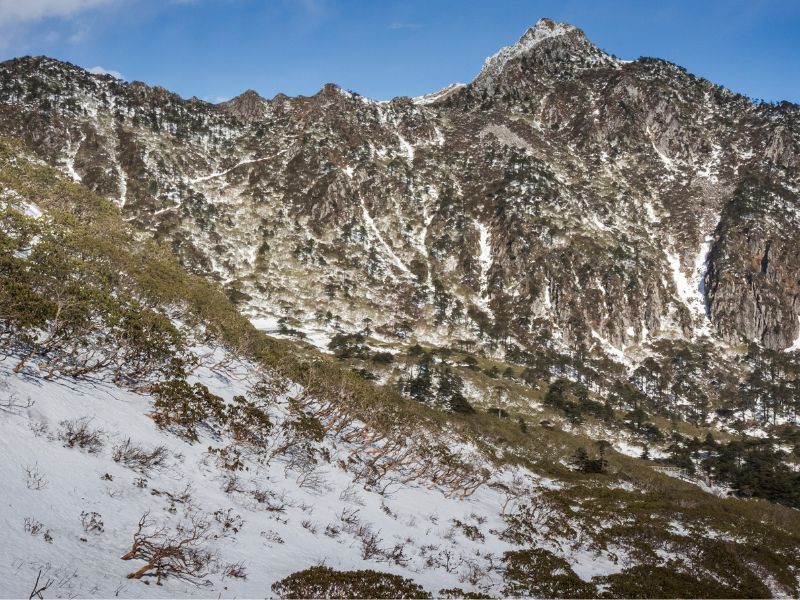
Day Trips From Dali, China
With its convenient location, Dali offers easy access to unique spots that provide a deeper understanding of Yunnan’s culture and natural wonders. Let’s explore some top day trips you can take from Dali.
1. Xizhou: A Glimpse into Bai Culture
Just a short drive from Dali, Xizhou Village is the ideal destination for those looking to experience the traditional Bai culture in a more authentic setting. This quaint village is known for its well-preserved Bai-style architecture, complete with whitewashed walls and intricate wood carvings. Stroll through the streets, visit bustling markets, and take part in a Bai tea ceremony for a truly immersive experience. Xizhou’s relaxed atmosphere and friendly locals make it a peaceful retreat from the busier Dali Old Town.
- Traditional Bai Homes: Admire the beautiful Bai-style buildings, some of which have been standing for centuries.
- Bai Tea Ceremony: Participate in this cultural ritual that’s deeply rooted in Bai traditions.
- Local Markets: Explore the vibrant village markets, where you can find everything from fresh produce to handmade crafts.
Tip: Don’t forget to try Xizhou baba, a delicious local flatbread filled with sweet or savory ingredients, perfect as a snack while you explore.
2. Shaxi Ancient Town: A Journey Back in Time
A visit to Shaxi Ancient Town offers a step back in time to one of the best-preserved Tea Horse Road trading posts in Yunnan. This historic town, about two hours from Dali, is famous for its cobblestone streets, old inns, and temples that hark back to a time when it served as a bustling hub for merchants traveling between China and Tibet. The town is peaceful and less touristy, providing a quiet escape where you can enjoy the slower pace of life and soak in the rich history.
- Tea Horse Road History: Learn about Shaxi’s role as a key stop on the ancient trade route between Yunnan and Tibet.
- Sideng Market Square: Wander through this beautifully preserved square, once the heart of the trading town.
- Shibao Mountain: A short drive from Shaxi, explore the sacred Shibao Mountain, known for its Buddhist grottoes and cliff carvings.
Tip: Visit Shaxi on market day, which takes place every Friday, to see the village at its liveliest with locals trading goods and fresh produce.
3. Weishan: An Off-the-Beaten-Path Gem
For an off-the-beaten-path adventure, head to Weishan, a quiet ancient town about an hour and a half from Dali. Weishan is known for its well-preserved Ming Dynasty architecture and tranquil atmosphere. The town was once the capital of the Nanzhao Kingdom, and its streets are filled with history, from the ancient Weibao Mountain temple complex to the traditional wooden houses lining the main thoroughfare. A day trip to Weishan offers a more laid-back alternative to the busier tourist spots, making it perfect for travelers seeking authenticity and solitude.
- Weibao Mountain: Hike up this sacred mountain to visit Taoist temples and enjoy sweeping views of the surrounding area.
- Ming Dynasty Architecture: Explore the ancient streets lined with wooden houses, reflecting the town’s historical significance.
- Local Markets: Experience local life by wandering through Weishan’s vibrant markets, where villagers come to trade goods.
Tip: Take the time to hike up to the Taoist temples on Weibao Mountain—it’s a serene walk that provides stunning panoramic views.
4. Jianchuan: Stone Treasure Mountain Grottoes
If you’re interested in history and ancient art, a trip to the Shibao Mountain Grottoes near Jianchuan is a must. Located about two hours from Dali, the grottoes are home to intricate Buddhist carvings that date back over a thousand years. These cliffside sculptures are an incredible testament to the artistic and spiritual history of the region. The hike to reach the grottoes is scenic and rewarding, with stunning views of the surrounding mountains and forests.
- Buddhist Grottoes: Explore the ancient stone carvings that depict scenes from Buddhist mythology and local folklore.
- Hiking Trails: Enjoy a peaceful hike through the mountains, with breathtaking views along the way.
- Historical Significance: Learn about the cultural and religious importance of these grottoes during the Nanzhao and Dali Kingdom periods.
Tip: Bring a picnic and spend some time enjoying the serene surroundings of Shibao Mountain after exploring the grottoes.
5. Cangshan Mountain: A Scenic Adventure Close to Home
If you’re looking for a day trip that doesn’t require much travel, the Cangshan Mountain range is right on Dali’s doorstep and offers incredible hiking opportunities. With over 18 peaks, the mountains provide a range of trails suitable for all fitness levels. The Cloud Path is a popular, moderate hike that offers stunning views of Erhai Lake and Dali Old Town. For those who prefer a more leisurely experience, take the cable car to the top and enjoy the scenery from above. Cangshan is perfect for nature lovers who want to spend the day surrounded by breathtaking landscapes.
- Cloud Path Hike: Walk along this scenic trail with panoramic views of the lake and surrounding countryside.
- Cable Car Ride: Take the cable car up the mountain for an easy and scenic way to enjoy the views.
- Zhonghe Temple: Visit this ancient temple nestled in the mountains, offering a peaceful retreat from the busier tourist areas.
Tip: Start your hike early in the morning to avoid the midday heat and enjoy the cooler, more tranquil mountain atmosphere.
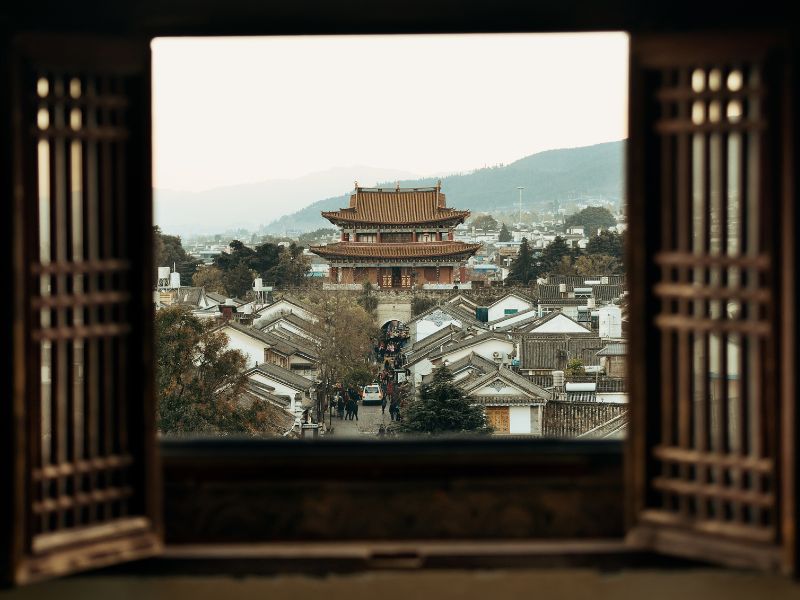
Dali Transportation Guide
Here’s a guide to the best ways to get around Dali during your stay.
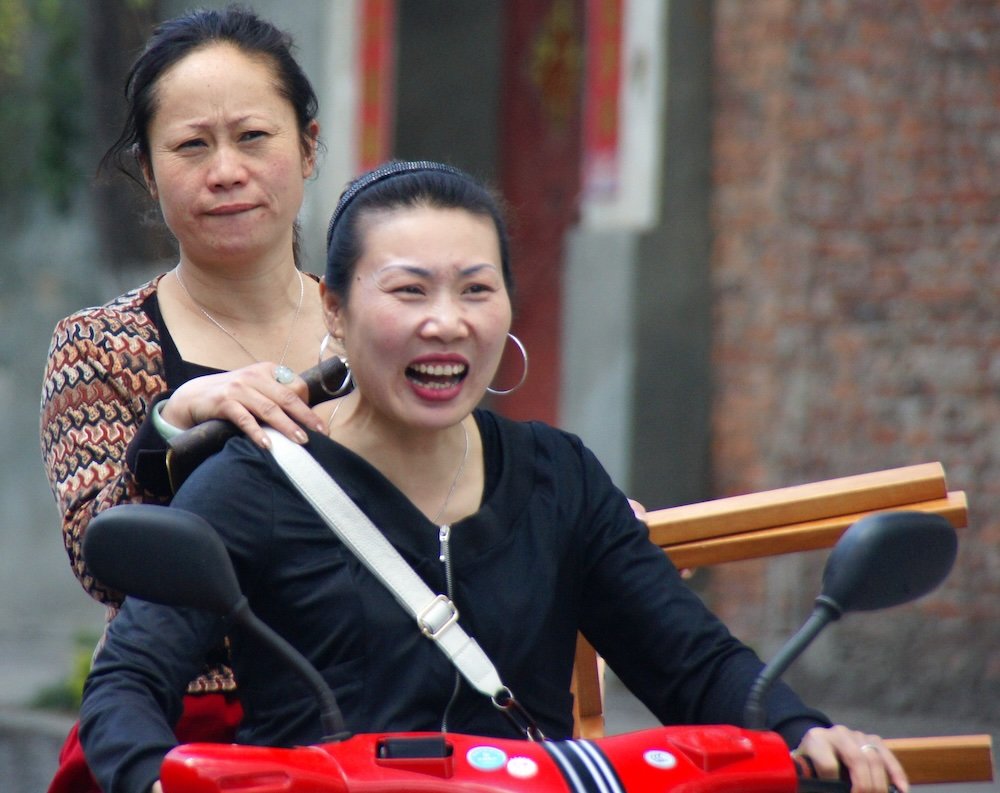
1. Public Buses: Affordable and Reliable
Dali offers a well-connected public bus system, making it easy to travel between the Old Town, Erhai Lake, and nearby villages like Xizhou. The buses are affordable, with most fares costing just a few yuan, and they run frequently throughout the day. If you’re staying in Dali Old Town, you can easily catch a bus to the train station, Dali New Town (Xiaguan), or take a longer trip to surrounding scenic areas. While the buses can be a bit crowded at times, they are a budget-friendly and reliable option for getting around.
- Affordable Fares: Bus rides are very inexpensive, usually costing between 1 to 5 yuan depending on the distance.
- Extensive Routes: Buses connect Dali Old Town with Erhai Lake, nearby villages, and other major sites.
- Frequent Service: Buses run regularly, making it easy to catch one without waiting too long.
Tip: Have small change ready for bus fares, as drivers often don’t carry much change for larger bills.
2. Cycling: A Scenic Way to Explore
One of the most popular ways to explore Dali and its surroundings is by bicycle. Renting a bike is easy, and the roads around Erhai Lake offer beautiful, scenic rides with plenty of opportunities to stop and take in the view. Whether you choose to cycle around the lake or explore nearby villages like Shuanglang, biking in Dali is a refreshing and eco-friendly way to see the sights. The flat terrain and wide bike lanes make this an ideal option for riders of all levels.
- Bike Rentals: Rent bikes from shops in Dali Old Town or near Erhai Lake for reasonable daily rates.
- Scenic Routes: Cycle along the shores of Erhai Lake or head out to the countryside to discover hidden villages.
- Flat Terrain: The roads around Dali and Erhai Lake are mostly flat, making for an easy and enjoyable ride.
Tip: Start your ride early in the morning to avoid traffic and catch the stunning sunrise over Erhai Lake.
3. Walking: The Best Way to Explore Dali Old Town
Walking is the most immersive way to experience Dali Old Town. The compact size of the town makes it easy to explore on foot, and you’ll find that wandering through the ancient streets is part of Dali’s charm. From the Foreigner’s Street to the traditional Bai architecture found throughout the town, there’s always something new to discover on foot. Walking also gives you the freedom to explore the hidden alleys, visit local markets, or pop into a quiet café when you need a break.
- Pedestrian-Friendly: Dali Old Town is mostly car-free, with pedestrian-friendly streets and alleys.
- Compact Layout: All major attractions in the Old Town are within walking distance of each other.
- Hidden Gems: Walking allows you to discover hidden courtyards, local shops, and off-the-beaten-path sights.
Tip: Wear comfortable shoes and take your time exploring—there’s no need to rush through Dali’s relaxed atmosphere.
4. Taxis and Ride-Hailing: Convenient for Longer Distances
If you need to travel further or don’t feel like biking, taxis and ride-hailing apps are widely available in Dali. Taxis are inexpensive and easy to flag down, especially in Dali Old Town and around popular tourist spots. For more convenience, you can also use the Didi app (China’s version of Uber) to book a ride directly from your phone. Whether you’re heading to the Cangshan Mountains or need a lift to the train station, taxis and ride-hailing services are great for covering longer distances without hassle.
- Easy to Find: Taxis are readily available in most parts of Dali, especially near tourist areas.
- Ride-Hailing Apps: Use Didi for a more convenient and reliable option, especially if you don’t speak Chinese.
- Inexpensive Rides: Taxis and ride-hailing fares are reasonable, with short trips costing as little as 20 to 30 yuan.
Tip: Always carry the address of your destination written in Chinese characters, as many drivers may not speak English.
5. Dali Train Station: Gateway to Other Yunnan Cities
For those looking to travel to or from Dali, the Dali Train Station is the main hub for train travel. Located in Dali New Town (Xiaguan), the train station connects the city to other parts of Yunnan, including Kunming and Lijiang. The high-speed train from Kunming to Dali is a particularly popular route, offering a comfortable and fast way to reach the city. The station itself is modern, with plenty of amenities like restaurants, shops, and waiting areas.
- High-Speed Trains: Enjoy a quick and scenic ride from Kunming to Dali on the high-speed train, which takes about 2 hours.
- Comfortable Facilities: Dali Train Station has modern amenities, including ticket counters, waiting areas, and food options.
- Connections to Other Cities: Use the train station to travel to other popular destinations like Lijiang and Shangri-La.
Tip: Book your train tickets in advance, especially during peak travel seasons, as trains to and from Dali can fill up quickly.

Where To Visit After Your Trip To Dali?
Here are a few top destinations to visit after your trip to Dali.
1. Lijiang: A UNESCO World Heritage Gem
Lijiang, a UNESCO World Heritage Site, is just a few hours north of Dali and is known for its ancient Naxi culture and stunning Old Town. The labyrinth of cobblestone streets, bridges, and canals is a delight to explore, especially in the evenings when the town is beautifully illuminated. Beyond the Old Town, Jade Dragon Snow Mountain looms in the distance, offering breathtaking views and hiking opportunities. Don’t miss the chance to visit the Black Dragon Pool and learn about the Dongba culture at the local museum.
- Naxi Culture: Discover the traditions and language of the Naxi people, one of the region’s most unique ethnic groups.
- Jade Dragon Snow Mountain: Take a cable car up the mountain or enjoy a scenic hike at the foot of this majestic peak.
- Black Dragon Pool: Visit this serene park with views of Jade Dragon Snow Mountain reflected in the waters.
Tip: Visit Shuhe Ancient Town, just outside Lijiang, for a quieter and less touristy alternative to Lijiang Old Town.
2. Shangri-La: A Gateway to Tibet
For a journey into mystical landscapes and Tibetan culture, head to Shangri-La (formerly known as Zhongdian), located in the far north of Yunnan. Perched on the edge of the Tibetan Plateau, Shangri-La offers a dramatic change in scenery with its vast grasslands, snow-capped peaks, and Buddhist monasteries. Songzanlin Monastery, often referred to as the “Little Potala Palace,” is one of the highlights, where you can witness monks in prayer and explore the rich Tibetan Buddhist traditions. The region also offers fantastic hiking opportunities, especially around Pudacuo National Park.
- Songzanlin Monastery: Explore this stunning Tibetan Buddhist monastery, with its golden rooftops and peaceful atmosphere.
- Pudacuo National Park: Hike through alpine meadows, lakes, and forests in one of China’s most pristine national parks.
- Tibetan Culture: Experience Tibetan traditions, from the local cuisine to vibrant festivals celebrated by the community.
Tip: Pack warm clothing, as Shangri-La’s high altitude means temperatures can drop significantly, even in the summer months.
3. Kunming: The City of Eternal Spring
If you’re looking for a city escape with a blend of culture and nature, Kunming, Yunnan’s capital, is a fantastic destination. Known as the City of Eternal Spring due to its pleasant year-round climate, Kunming offers plenty to explore. Visit the Stone Forest, a UNESCO-listed site filled with towering limestone formations that seem to defy gravity. For a more laid-back day, stroll through the Green Lake Park, where locals practice tai chi and musicians gather to play traditional instruments. Kunming is also a hub for Yunnan’s diverse ethnic food scene, so be sure to indulge in the local specialties.
- Stone Forest: Wander through the incredible karst formations of this natural wonder, just a short drive from Kunming.
- Green Lake Park: Enjoy a peaceful stroll or paddleboat ride in one of Kunming’s most popular parks.
- Yunnan Cuisine: Sample local dishes like Crossing the Bridge Noodles and Yunnan-style hot pot at the city’s bustling markets.
Tip: Kunming is an excellent starting point if you plan to visit other parts of Yunnan or head into neighboring provinces, as it’s well-connected by air and rail.
4. Yuanyang: Majestic Rice Terraces
For a truly unforgettable experience, make your way to Yuanyang, famous for its rice terraces that stretch as far as the eye can see. These stunning terraces, carved into the mountains over centuries by the Hani people, are a photographer’s dream. In the early mornings and late afternoons, the terraces reflect the sky, creating a breathtaking scene of light and color. In addition to the terraces, Yuanyang offers a chance to learn about the rich traditions of the Hani people, who have maintained their way of life in these remote hills for generations.
- Rice Terraces: Marvel at the expansive terraces that change color with the seasons, offering spectacular views year-round.
- Hani Villages: Visit traditional Hani villages, where you can learn about the culture and daily life of this indigenous group.
- Photography Hotspot: Capture the perfect sunrise or sunset over the terraces, one of the most beautiful sights in Yunnan.
Tip: The best time to visit is during the winter months when the terraces are filled with water, creating mirror-like reflections.
5. Jinghong: Gateway to Xishuangbanna
If you’re craving something more tropical, head to Jinghong, the capital of Xishuangbanna, located in the southernmost part of Yunnan near the borders of Myanmar and Laos. Jinghong offers a lush, tropical landscape that feels worlds away from the mountainous regions of Dali. Here, you can visit the Tropical Botanical Garden, home to rare plants and exotic flowers. The city is also a gateway to the unique culture of the Dai people, who celebrate the annual Water Splashing Festival with great enthusiasm. Don’t miss the Manfeilong Pagodas, a beautiful example of Dai Buddhist architecture.
- Tropical Botanical Garden: Explore a vast collection of exotic plants and trees in this lush tropical paradise.
- Water Splashing Festival: If you visit in April, you can participate in the lively Water Splashing Festival, a celebration of the Dai New Year.
- Manfeilong Pagodas: Admire the delicate white pagodas set among the greenery, a spiritual site for the local Dai community.
Tip: Xishuangbanna’s tropical climate can be hot and humid, so pack accordingly and stay hydrated while exploring.

Essential Questions About Visiting Dali, China: Practical Answers, Local Tips & On-the-Ground Advice
How many days do you really need in Dali for a first visit?
Three to four full days is a sweet spot. That gives you enough time to wander Dali Old Town, visit the Three Pagodas, get up into Cangshan Mountain, and spend at least one lazy day around Erhai Lake or in nearby villages like Xizhou or Shuanglang. If you’re adding day trips to places like Shaxi or Weishan, I’d stretch it to five or six days so you’re not rushing from one bus to the next. Slow travel suits Dali’s relaxed vibe, so if you can, err on the side of an extra day instead of trying to cram it into a weekend.
When is the best time of year to visit Dali in terms of weather and crowds?
Honestly, spring and autumn are your best bets. Roughly March to May and September to early November, you’ll get comfortable daytime temperatures, plenty of blue skies, and good visibility for those classic Cangshan-and-Erhai views. Summer can be warm and humid with more rain and the occasional downpour, plus bigger domestic crowds during school holidays. Winter is cooler, especially at night and up in the mountains, but still very doable if you pack layers. If you’re crowd-averse, avoid Chinese public holidays like Golden Week (early October) and Chinese New Year travel periods.
Is Dali Old Town or around Erhai Lake a better place to base yourself?
It depends. If it’s your first time in Dali and you want to be in the middle of the action, Dali Old Town makes life easy: you can walk to restaurants, bars, cafés, and many of the main sights. If you’re more into peaceful views and slow mornings, a guesthouse or boutique hotel on the shores of Erhai Lake (especially around Xizhou or Shuanglang) is magic. A lot of travelers actually split their stay: a couple of nights in Old Town and a couple of nights by the lake. That way you get the best of both worlds without committing to just one vibe.
How do you actually get to Dali from Kunming, Lijiang, or elsewhere in Yunnan?
Thankfully, it’s quite straightforward. High-speed trains run frequently between Kunming and Dali, and the journey usually takes around two hours, making it the most comfortable and time-efficient option. From Lijiang, you’ll typically travel by bus or train, depending on current schedules, with journeys of roughly 2.5–3.5 hours. Once you arrive at Dali’s train station in Xiaguan (New Dali), it’s an easy transfer by taxi, rideshare, or public bus up to Dali Old Town or your lakeside base. Buses remain the main option for more off-the-beaten-path routes, so keep some flexibility in your schedule to accommodate delays.
Do you need to rent a car in Dali, or is public transport and biking enough?
Nope. You absolutely don’t need a car here. The combo of public buses, taxis or Didi, plus bicycles and e-bikes will cover 95% of what you want to do. Buses connect Old Town with Xiaguan, the train station, and nearby villages, and they’re cheap and frequent. For lakeside exploring, cycling is a highlight rather than a chore, and if you’re not into pedal power, e-bikes make it almost effortless. A car only becomes interesting if you’re traveling as a bigger group and planning multiple long day trips in quick succession—otherwise, you’ll spend more time navigating than actually enjoying Dali.
Is Dali still a “backpacker town,” or is it more mainstream and touristy now?
Both. Dali’s backpacker roots are still there in the form of chilled hostels, traveler cafés, and laid-back bars, especially around Old Town. But over the years it’s also become a major domestic destination, with fancier boutique hotels, photo-opp streets, and a more polished tourism scene. That means you’ll see everything from dreadlocked travelers with giant backpacks to families with strollers and local influencers taking photos. If you head out to villages like Xizhou, Weishan, or Shaxi on day trips (or overnight), you’ll still find a very relaxed, old-school Yunnan vibe away from the crowds.
How budget-friendly is Dali for accommodation, food, and activities?
Overall, Dali is very forgiving on the wallet. You can sleep in simple guesthouses and hostels from roughly “shoestring backpacker” prices, or upgrade to mid-range boutique stays around Old Town or Erhai Lake for what would still be considered decent value compared to big cities. Food is one of the best deals: local noodles, rice dishes, and street snacks are cheap, and even sit-down dinners are usually kind to your budget unless you go ultra-luxury. The main expenses tend to be entrance tickets for big attractions (like the Three Pagodas), cable cars, and organized tours, so plan a rough daily “experience” budget on top of your meals and accommodation.
Is Dali safe for solo travelers, including solo female travelers?
Yes. Dali is generally a very safe place to travel, and solo travelers—women included—tend to feel comfortable walking around Old Town and the lakeside areas, especially during the day. At night, the same basic precautions apply as anywhere: stick to well-lit streets, keep an eye on your drinks, and avoid wandering down totally empty alleys alone if you can help it. Petty theft can happen in crowded markets and bus stations, so keep your valuables tucked away and use a money belt or anti-theft bag if that makes you feel more relaxed.
How bad is the altitude in Dali and Cangshan for people who aren’t used to high places?
Dali Old Town sits at a moderate altitude, and many visitors feel completely fine—maybe just slightly more winded on uphill stretches. The Cangshan Mountains, cable car stations, and some hiking routes climb higher, so if you’re sensitive to altitude, you might feel a bit short of breath or mildly headachy. The key is to ease into it: hydrate, don’t rush your first day, and take breaks on hikes. If you have known heart or lung issues or a history of bad altitude sickness, it’s worth chatting with a doctor before your trip and being extra cautious with how far and how fast you go up in the mountains.
What should you pack specifically for Dali’s weather and activities?
Layers. More layers than you think. Dali days can be sunny and warm, but mornings and evenings cool off quickly, and it gets noticeably colder up on Cangshan. A lightweight down or fleece jacket, a windproof shell, and a couple of long-sleeve tops will go a long way. Add comfortable walking shoes or light hiking shoes, a hat, sunglasses, and good sunscreen—Yunnan sun can be deceptively strong. If you plan to cycle around Erhai Lake, quick-dry clothes and a light scarf or buff are handy. And don’t forget a small daypack and a packable rain jacket, especially in the summer rainy season.
Is Dali a good destination for families with kids?
Absolutely. Kids usually love Dali because it’s outdoorsy, colorful, and not as high-pressure as big cities. You’ve got open plazas in Old Town, boat rides on Erhai Lake, gentle biking routes, easy-access cable cars into the mountains, and plenty of snack food to keep everyone happy. The main things to watch with children are sun exposure, altitude changes, and food hygiene—stick to busy, popular food spots if your kids have sensitive stomachs. If you’re traveling with a stroller, Old Town’s cobblestones can be a bit bumpy, so a baby carrier or backpack might be more practical for longer wanders.
Are there any common scams or annoyances travelers should watch for in Dali?
Not really on a dramatic scale, but it’s still good to stay aware. You might run into the usual “tourist price” markups in markets, taxis not using the meter, or souvenir shops that push aggressively for sales. For tours and day trips, always check what’s included, clarify any optional shopping stops, and compare prices between a couple of operators so you’re not overpaying. Around Erhai Lake, be clear on the rate before hopping into boats or onto e-bikes, and don’t be shy about walking away if something doesn’t feel right. A friendly but firm attitude goes a long way in Dali.
What are some easy day trips from Dali if you want to see more of Yunnan?
You’re spoiled for choice. Xizhou is a classic half-day or full-day outing for Bai culture, markets, and architecture. Shaxi makes for an incredible full-day (or overnight) trip if you’re into old trade routes and quiet, atmospheric towns. Weishan offers a more off-the-beaten-path ancient town plus Weibao Mountain for temples and views. If you’re feeling ambitious, you can also use Dali as a stepping stone to longer moves toward Lijiang or Shangri-La. Just remember that some of these trips involve a couple of hours each way on buses or private transfers, so build in buffer time.
How easy is it to eat vegetarian or vegan in Dali?
Easier than in many parts of China, but you still need to communicate clearly. Because Yunnan cuisine leans heavily on vegetables, mushrooms, tofu, and dairy like Rushan cheese, vegetarian-friendly dishes are relatively common, especially in more touristy spots that see international travelers. Vegan takes a bit more effort since many veggie dishes are cooked in meat-based broths or with small bits of meat. Learn a couple of key phrases or keep them written down (like “no meat, no fish, no eggs, no milk”) and don’t be afraid to request simple stir-fried veggies, tofu, and rice. In Old Town and around the lake, you’ll also find cafés and restaurants that already cater to plant-based travelers.
Is Dali worth visiting if you’re more into culture and food than hardcore hiking?
Definitely. Even if you never step on a serious mountain trail, Dali delivers on culture, markets, and food in a big way. You can spend days wandering Old Town, visiting temples and museums, watching Bai tea ceremonies, browsing night markets, and doing low-key walks in villages like Xizhou or Weishan. On the food side, from crossing-the-bridge noodles and Yunnan cheese to street snacks and local beers, there’s more than enough to keep a non-hiker happy. Think of the mountains and lake as a beautiful backdrop rather than an obligation—you can enjoy the views from a cable car, a café terrace, or a lakeside bench.
Dali Travel Guide: Final Thoughts
From the ancient Bai architecture in Dali Old Town to the serene waters of Erhai Lake, this city is a place where time seems to slow down, inviting you to explore at a relaxed pace. Whether you spent your days hiking in the Cangshan Mountains or wandering through traditional villages like Xizhou, Dali has plenty on tap.

History and Culture
Dali’s deep historical roots and rich cultural tapestry make it a truly special place to visit. The city’s role as the ancient capital of the Nanzhao Kingdom and its position along the Tea Horse Road have left lasting legacies that are visible in the city’s architecture, temples, and customs. You’ll find a blend of traditional Bai culture with influences from the region’s past kingdoms, creating a unique cultural atmosphere. From the iconic Three Pagodas to the colorful local markets, Dali’s history is as alive today as it was centuries ago.
- Three Pagodas: These ancient pagodas, standing tall against the Cangshan Mountains, are a must-see historical landmark.
- Bai Culture: Explore the customs, traditions, and architecture of the Bai people, whose influence is seen throughout Dali.
- Tea Horse Road Legacy: Learn about Dali’s role as a key stop on the ancient trade route that connected China with Tibet and beyond.
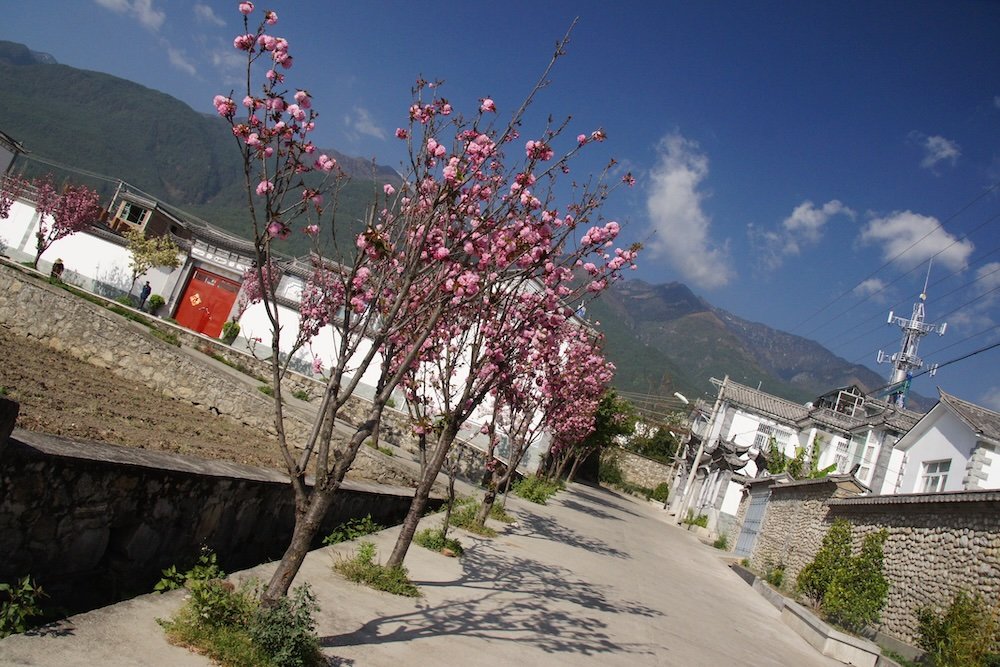
A Gateway to Natural Beauty
Surrounded by dramatic landscapes, Dali offers unparalleled access to some of Yunnan’s most stunning natural beauty. Erhai Lake provides a tranquil escape, with its calm waters reflecting the surrounding mountains, making it a perfect spot for cycling or boat tours. The Cangshan Mountains loom high above the city, offering endless opportunities for hiking, with trails that lead to breathtaking views. Whether you’re an outdoor enthusiast or just looking to soak in the natural beauty, Dali’s surroundings will captivate you.
- Erhai Lake: Take a boat ride or cycle around this serene lake for stunning views of the mountains and villages.
- Cangshan Mountains: Hike or take the cable car up to these majestic mountains for panoramic vistas over Dali and Erhai Lake.
- Scenic Villages: Explore the countryside around Dali, where traditional Bai villages like Shuanglang offer peaceful retreats.

A Laid-Back Atmosphere That Invites Exploration
What truly sets Dali apart is its relaxed, welcoming atmosphere. Whether you’re wandering the bustling streets of Dali Old Town or sipping tea in a quiet courtyard, Dali invites you to slow down and savor the moment. The city’s blend of local life, tourism, and a growing creative community has fostered a laid-back vibe that’s hard to resist. Take your time to discover hidden gems, from cozy cafes to boutique shops selling local crafts, and you’ll find that Dali is a city best enjoyed at a leisurely pace.
- Old Town Strolls: Wander the pedestrian-friendly streets of Dali Old Town, discovering local shops and hidden cafes.
- Cafes and Tea Houses: Enjoy the laid-back vibe of Dali’s many cafes, perfect for taking a break after exploring the city.
- Local Markets: Visit the local markets to experience daily life in Dali, where you can sample street food or buy handmade goods.
Keep Dali’s spirit of relaxation and exploration with you as you continue discovering the wonders of Yunnan.
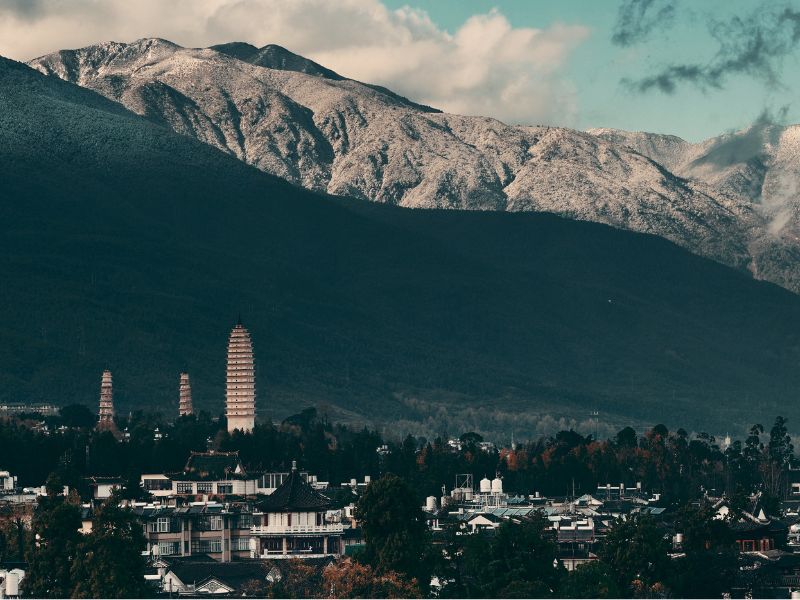
Ode To Dali
In the land of Dali, where mountains meet the sky, A place of beauty, where ancient echoes lie. Wander through the streets of Old Town’s embrace, With Bai-style architecture, a glimpse of grace.
Three Pagodas stand tall, proud and strong, Whispering tales of history, a legacy that’s long. Erhai Lake glistens, serene and pure, Reflecting the beauty that will endure.
Xizhou Village beckons, with its charm untold, Bai culture and traditions to unfold. Step into the past, where time slows down, As ancient customs and crafts are found.
Cangshan Mountain calls, with trails to explore, Nature’s wonders, to captivate and adore. Rivers and waterfalls, a symphony of sound, A sanctuary of peace, where solace is found.
Shaxi’s ancient streets, a portal to the past, Trade routes and stories that forever last. Shibaoshan’s grottoes, a spiritual retreat, Carved in stone, a treasure to meet.
Journey further to Lijiang, Shangri-La, and beyond, Yunnan’s beauty, an enchanting bond. Immerse in the colors, the flavors, the sights, A traveler’s delight, where dreams take flight.
Oh, traveler, let Dali’s essence touch your soul, With each step, a new story to unfold. Embrace the wonders, the cultures, the art, In the heart of Dali, a journey to start.
